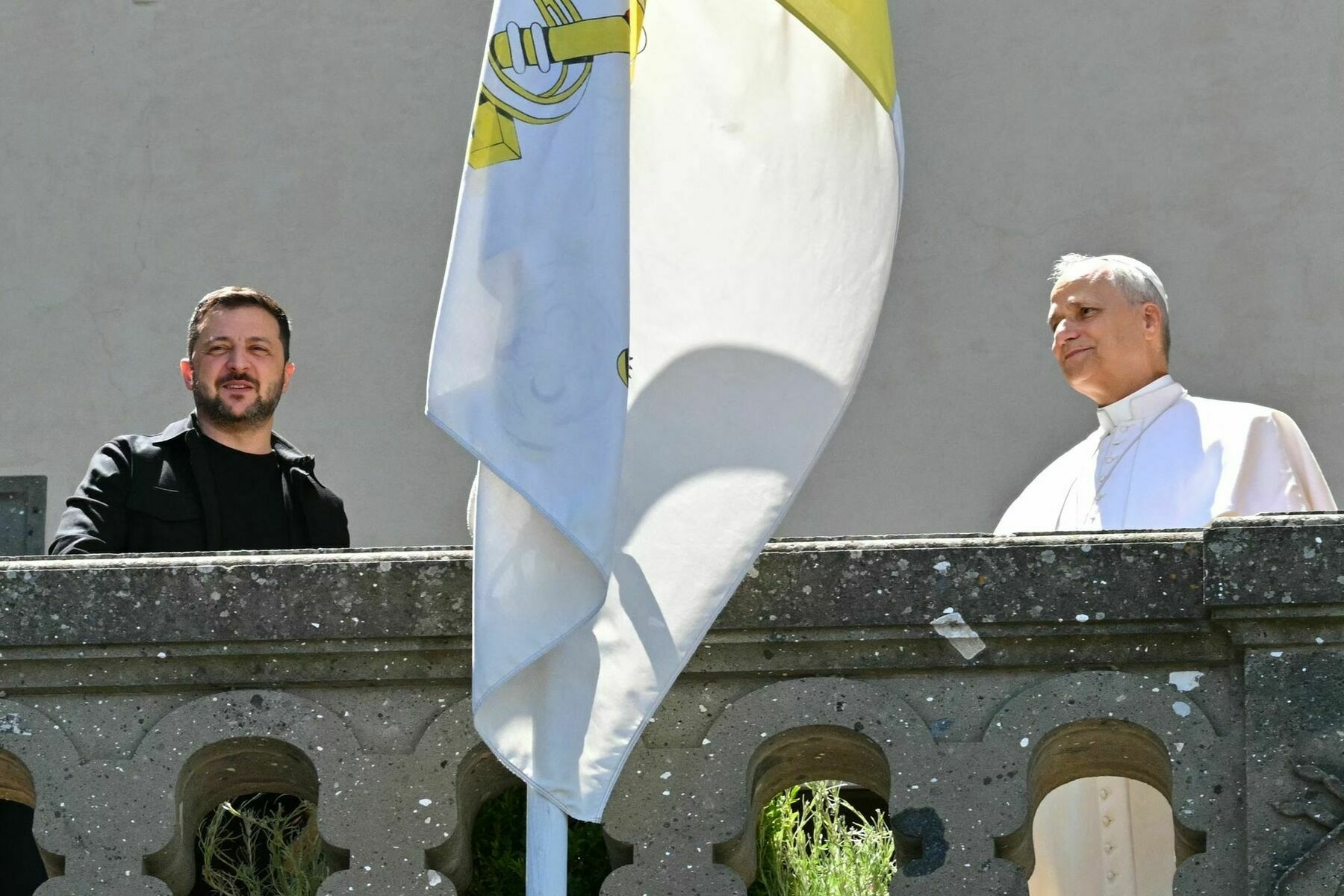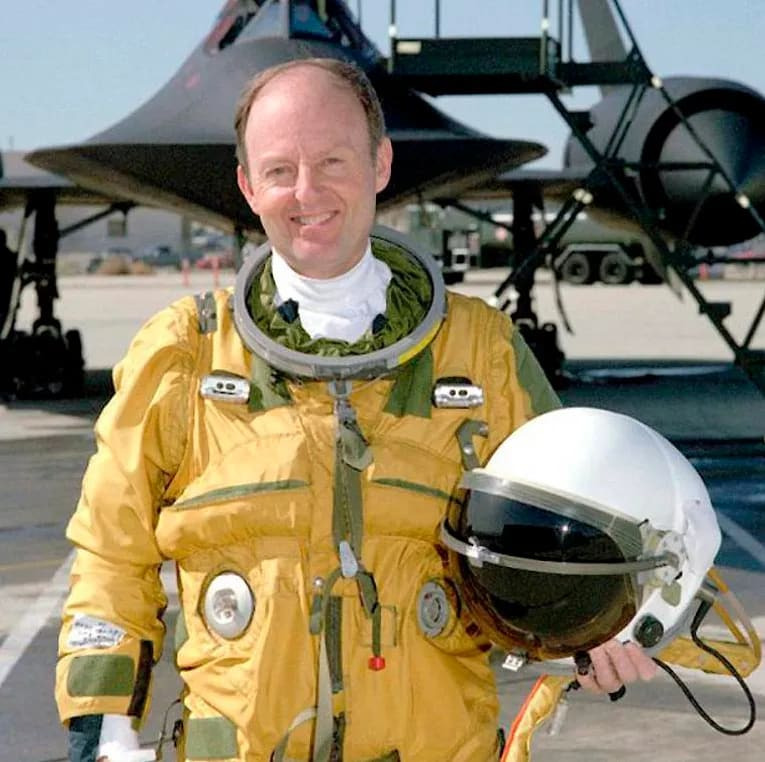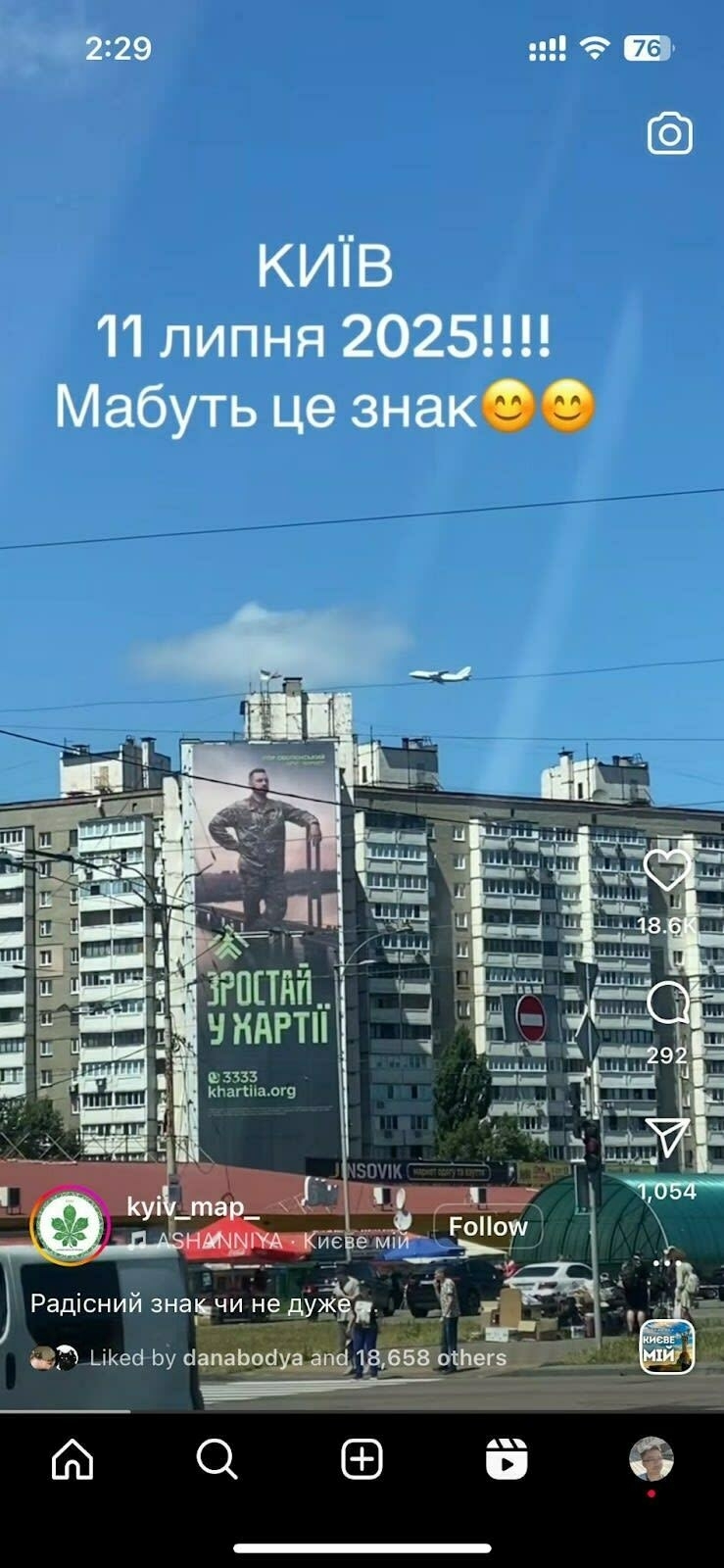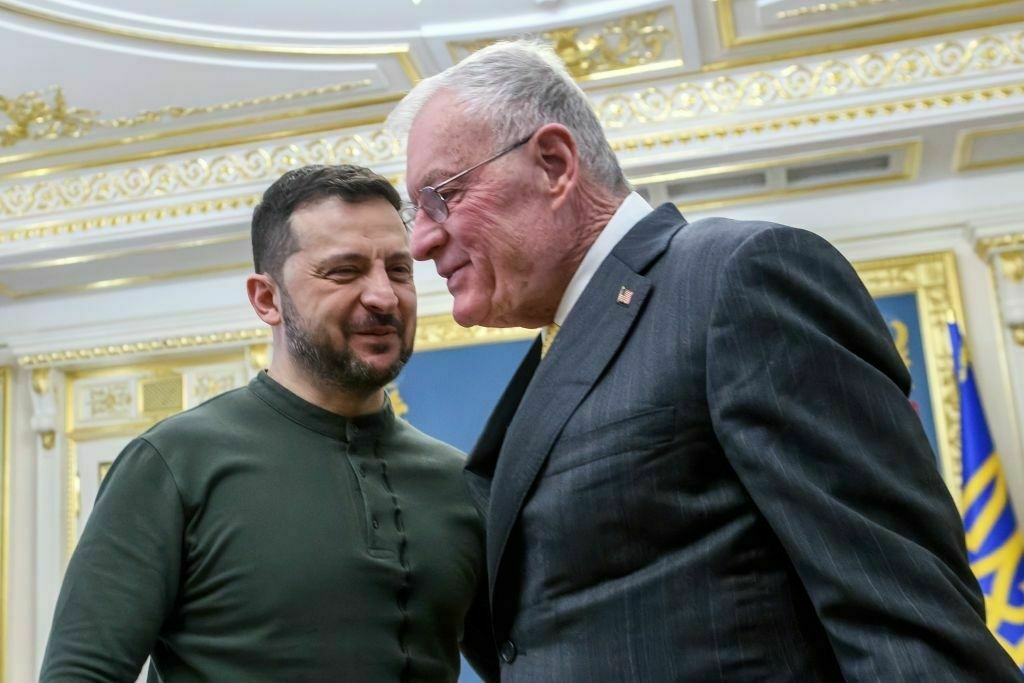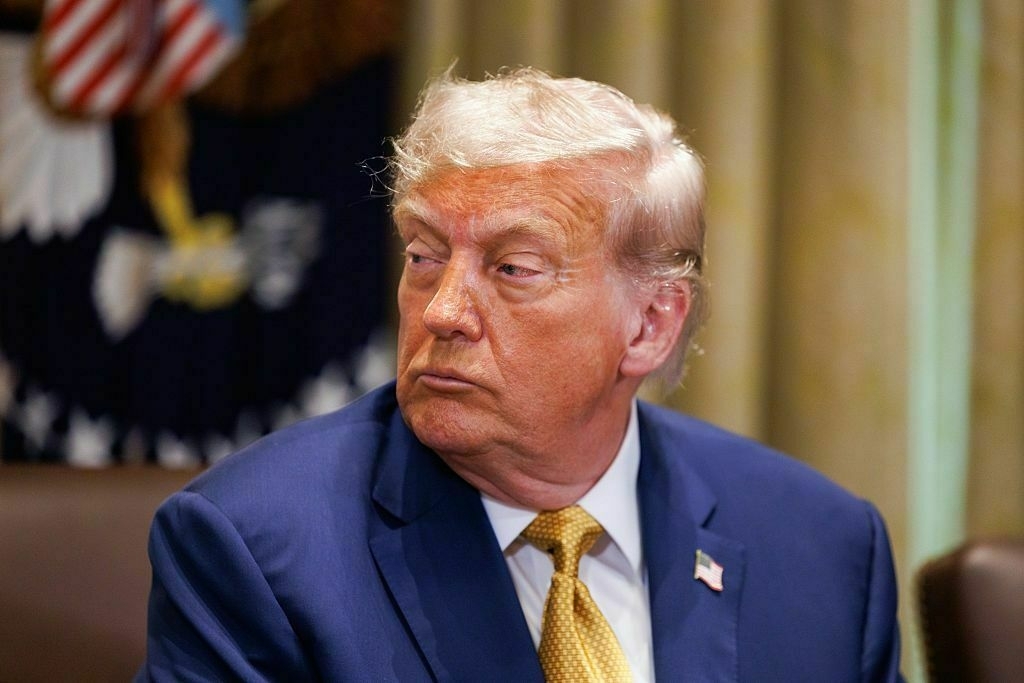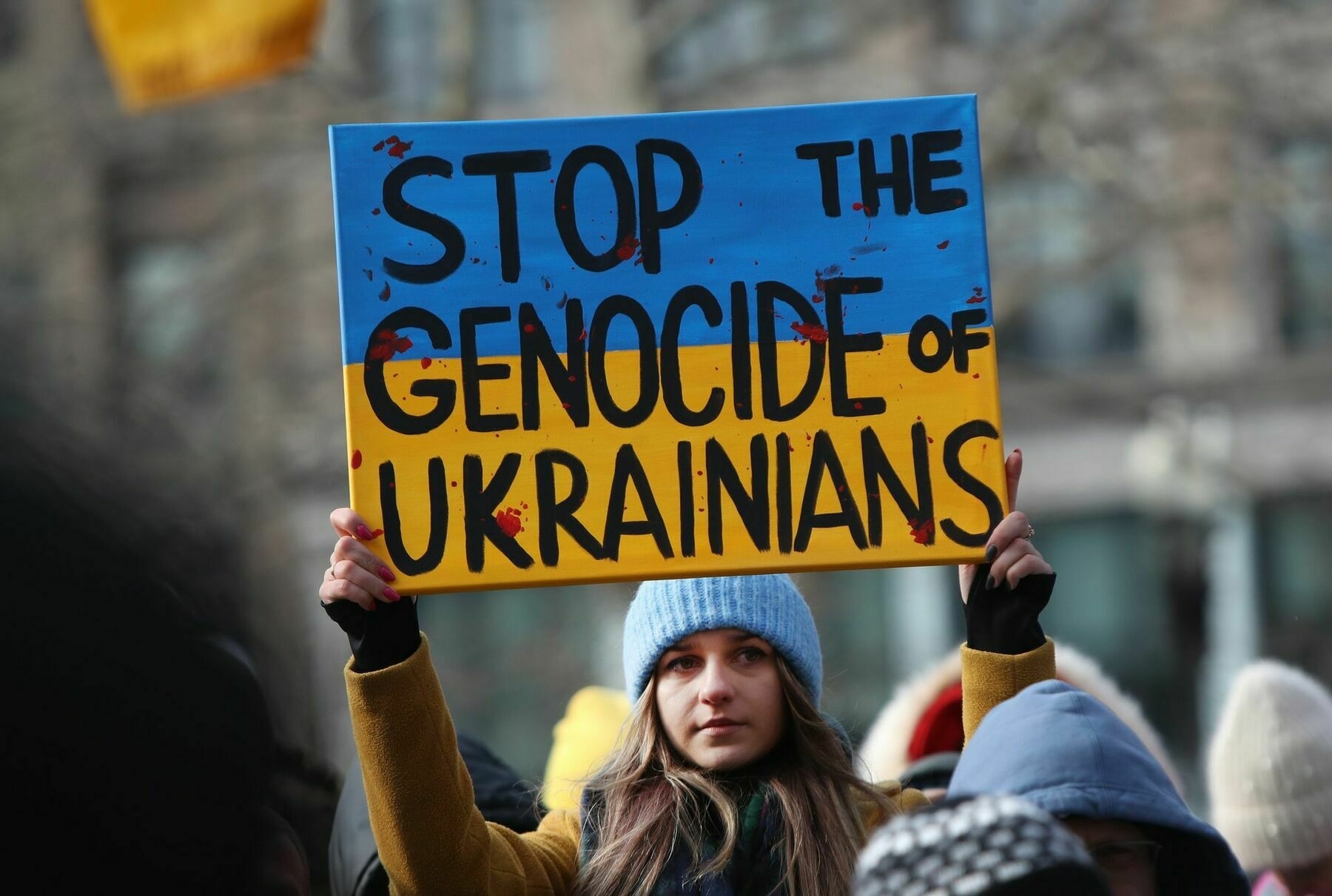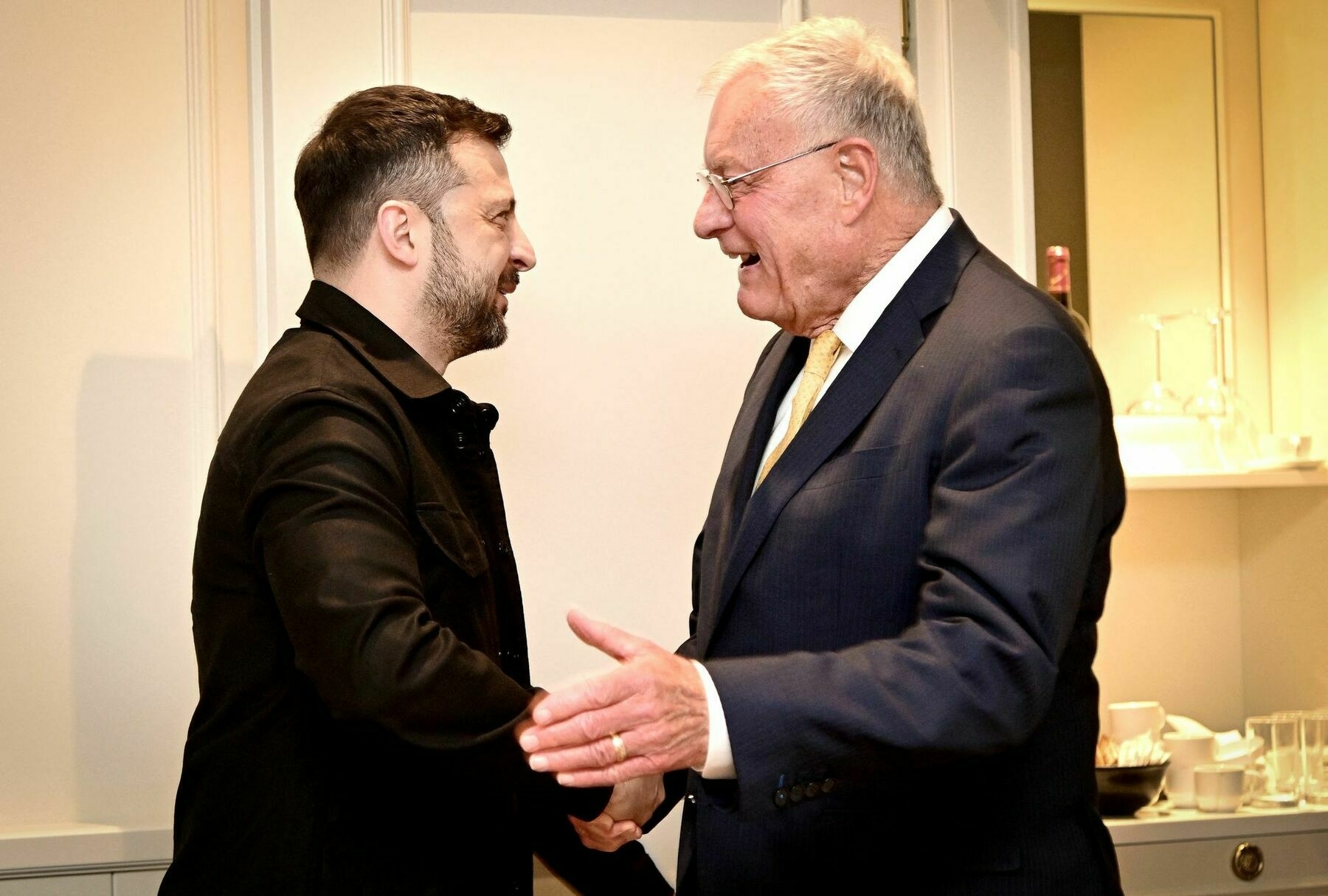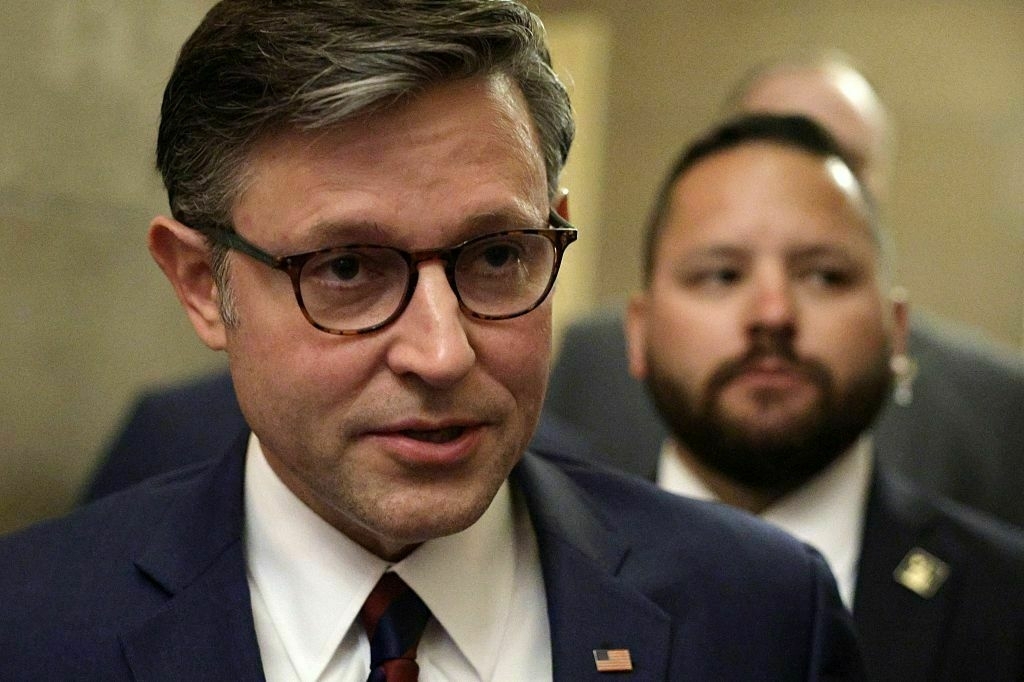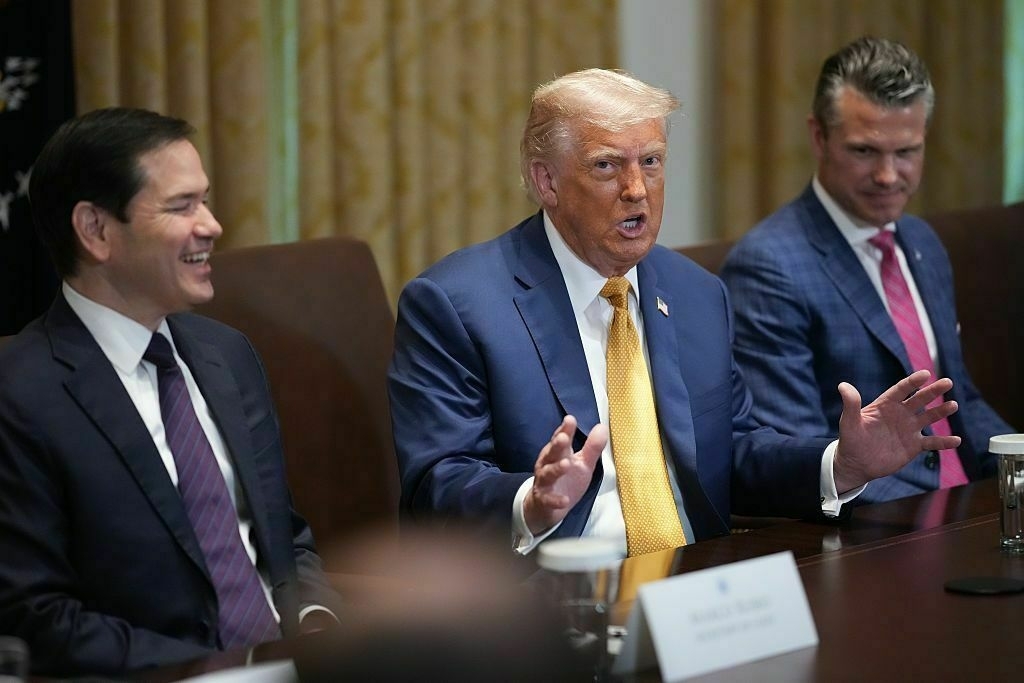-
The Ukrainian links of America’s legendary SR-71 spy plane
Did you know that The Counteroffensive has a sister publication that covers innovations in Ukrainian military technology and defense regulation? It’s called The Counteroffensive.Pro, and you can read it here.
Support our coverage of the war and Ukrainian innovation today!"I was inspired by the example of my uncle, who was a pilot in the Royal Canadian Air Force. He was an example," said Rogers Smith, a former pilot of SR-71 at NASA, in an interview with The Counteroffensive.
The SR-71 ‘Blackbird’ plane is a product of the Cold War, and the United States and the Soviet Union were locked in a fierce competition over the development of technology. This high-tech embodiment of engineering artistry, SR-71, was developed in the 1960s to spy on the USSR.
It was built to replace the U-2, a reconnaissance aircraft that the Soviets had successfully shot down in May 1960. It was clear that even the blazing speed of 700-800 km/h was no longer safe, as the Soviets were capable of striking down such aircraft with their SA-2 Guideline air defense system, and the development of more capable radars was in the works.
Titanium was chosen for the SR-71 due to its exceptional strength and resistance to high temperatures. Aluminum loses its strength and functionality at temperatures above 200°C.
At speeds exceeding 3,500 km/h, the temperature can reach up to 600°C. With the SR-71 capable of flying at speeds of Mach 3 (over 3,500 km/h) and altitudes of over 20 km, it was clear that aluminum would simply melt, said Smith.
The SR-71 was used for reconnaissance – to find Soviet-made airplanes in Nicaragua, for example, and to observe China's nuclear bomb tests.
Ironically, the titanium used to make the fuselage for the plane was designed to spy on the USSR and was supplied by the USSR itself.
We reviewed declassified CIA documents and concluded that it was likely sourced from a plant in Zaporizhzhia, Ukraine or other Ukrainian mining sites.
At the time development began on the aircraft, the United States lacked the industrial capacity needed to build it, as it required special titanium ore alloys.
The USSR had other titanium processing plants, but all available information suggests that only the Zaporizhzhia plant produced the right kind of titanium during the development of the Blackbird.
The history of the SR-71
The SR-71 Blackbird was developed by the American corporation Lockheed Corporation (now Lockheed Martin). Its first flight took place in December 1964.
The aircraft remained in service until 1999 with a brief interruption, and NASA used it in the 1990s for high-speed research. That's where Rogers Smith became an SR-71 Blackbird pilot.
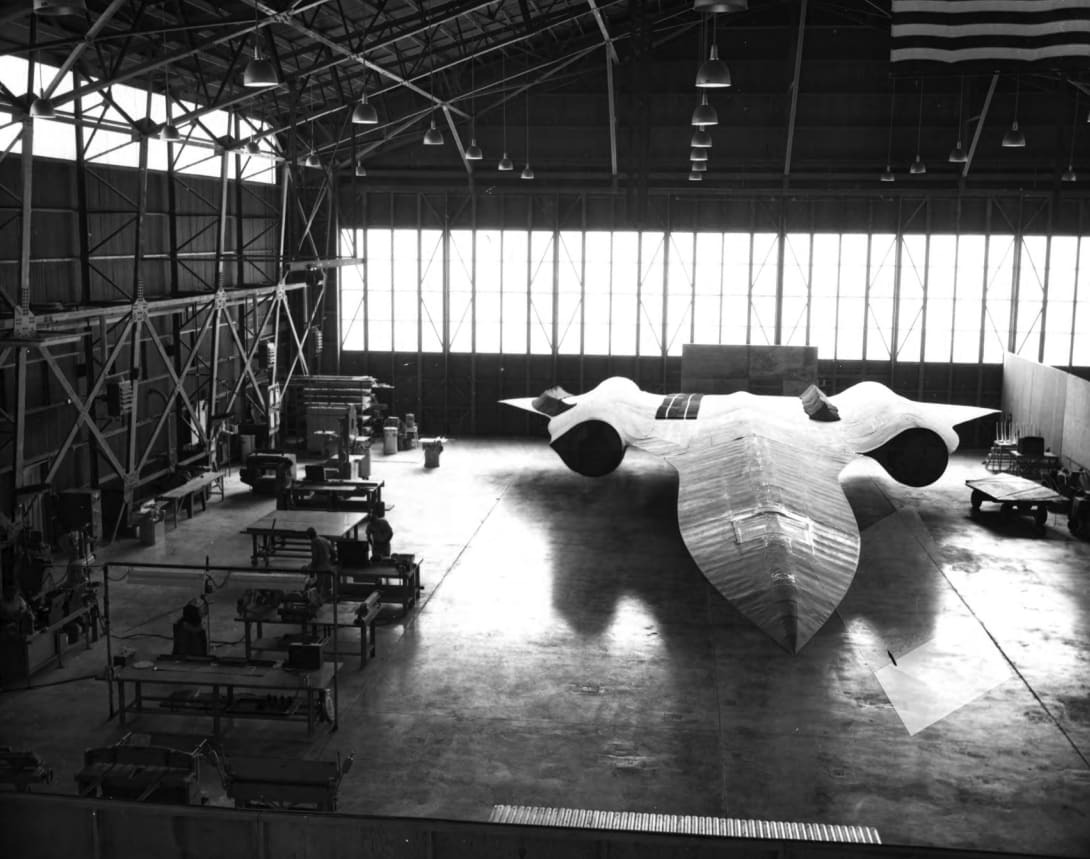
SR-71 Blackbird. August 11, 1961. Photo taken from the book ‘Photo in History’ [PDF]. When he received an offer to work at NASA in 1982, he took it with no hesitation. He also didn't know at the time that he would have the opportunity to fly the SR-71.
“So, when I walked into the office with Bill Dana [NASA research pilot] the first time, he pointed to a desk in the office. He was the last man to fly an X-15 [hypersonic rocket-powered aircraft]. He pointed to the desk and said: ‘That’s where you’ll sit.’ Well, that desk was where Neil Armstrong sat. It was his desk before he went off to do great things,” said Smith.
The SR-71 ended up at NASA, where scientists were conducting high-speed testing of various technologies, after the U.S. Air Force decided to retire the aircraft.
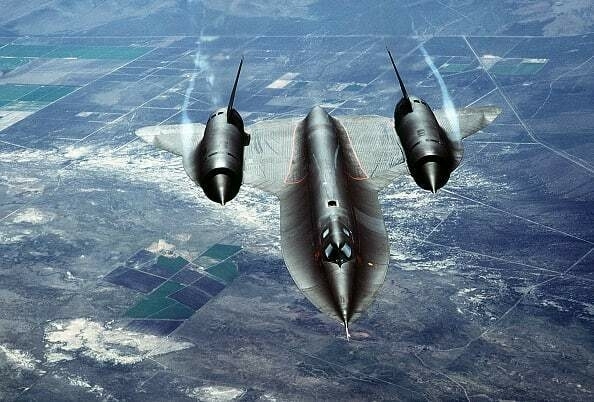
A U.S. Air Force SR-71A, also known as the ‘Blackbird,’ during a test flight over Beale Air Force Base in California. (Photo by Getty Images). Smith is now 89 years old, having dedicated his entire life to flying. Besides his love of flight, the Canadian had an interest in engineering, so at NASA, he specialized in advanced flight control systems, stability and control, and flying qualities throughout his career as a pilot.
The uniqueness of the SR-71 Blackbird's development lay in the fact that “everything had to be invented” to build it, wrote Kelly Johnson, one of the aircraft's designers at Skunk Works, Lockheed's secret advanced development division.
At that time, aircraft could reach speeds over 3,000 km/h only on afterburner, and for short periods of time. But for the Blackbird, such a speed had to be routine – they needed to create a fuselage that could withstand the speeds, temperatures, and loads.
Evidence linking the SR-71’s Titanium to Ukraine:
To solve this problem, they needed to use a new material that would be strong enough for supersonic flights. This led to the idea of using titanium alloy. In the 1960s, however, titanium was a very rare metal.
At that time, domestic production in the United States was not yet developed, and annual output was less than 1,000 tons. Furthermore, the size and quality of deposits were poor, and launching a new titanium production plant would take another three to five years.
So, the U.S. had to look elsewhere for titanium.
The CIA created an elaborate scheme to purchase titanium from the USSR, according to former pilot Rich Graham. A series of shell companies was created that purchased titanium under false pretenses. According to one such scheme, titanium was bought under the ruse that they would make pizza ovens, Graham said in a 2021 interview.
The scheme involved several countries, so that the USSR wouldn't figure out the real buyer or the real purpose. Exactly which companies were created and how the export scheme worked remain unknown.
“The CIA conducted a worldwide search and, using third parties and dummy companies, managed to unobtrusively purchase the base metal from one of the world's leading exporters – the Soviet Union. The Russians never had an inkling of how they were actually contributing to the creation of the airplane being rushed into construction to spy on their homeland,” Ben R. Rich wrote in ‘Skunk Works: A Personal Memoir of My Years at Lockheed.’
No one has ever specifically stated that the SR-71’s titanium came from Ukraine.
But there is strong circumstantial evidence that the titanium was mined in Ukraine, and could have only been refined at a plant in the southern Zaporizhzhia region.
A declassified 1985 CIA document shows that the Soviet Union mined a kind of titanium ore called Ilmenite, from which it processed into raw titanium:
“Ilmenite is mined and concentrated at two locations in the Ukraine-north of Irshansk in the Zhitomirskaya Oblast' and near Vol'nogorsk in the Dnepropetrovskaya Oblast.”
The document also shows that the U.S. intelligence agency paid close attention in particular to the Zaporizhzhia Titanium-Magnesium Plant (ZTMP) in what was then the Ukrainian Soviet Socialist Republic, which processed ore into raw titanium.
Here’s an excerpt of that intelligence report on Soviet titanium production:
“During the late 1950s and 1960s, the USSR strove to build the production capacity and develop the technology necessary for military applications. Three combination titanium-magnesium plants began production: at Zaporozh'ye in 1956 [emphasis added], at Berezniki in 1964, and at Ust'-Kamenogorsk in 1965.”
Of those three, only Zaporizhzhia would have been active when the SR-71 was being designed in the early 1960s.
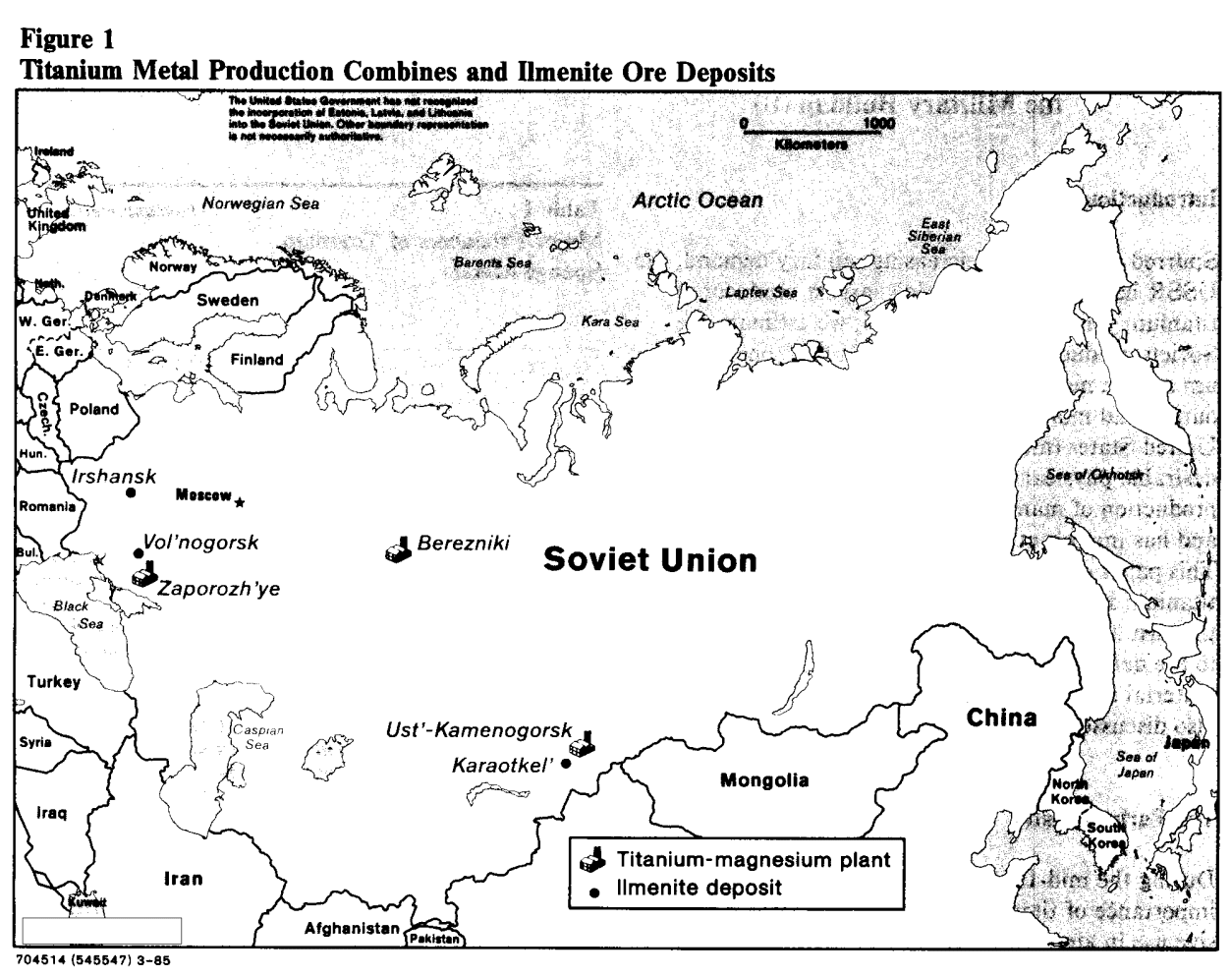
A declassified 1985 CIA document showing the Titanium plants in the Soviet Union. (Source: CIA Reading Room). So great was the CIA’s interest in the Ukrainian plant that it specifically was photographed from the air multiple times in 1961, according to a then-Secret document:
“The factory proper is a fenced installation approximately 2,600 feet square... Security measures appear to be consistent with those at other Soviet chemical plants... Many of the buildings are rail served.”
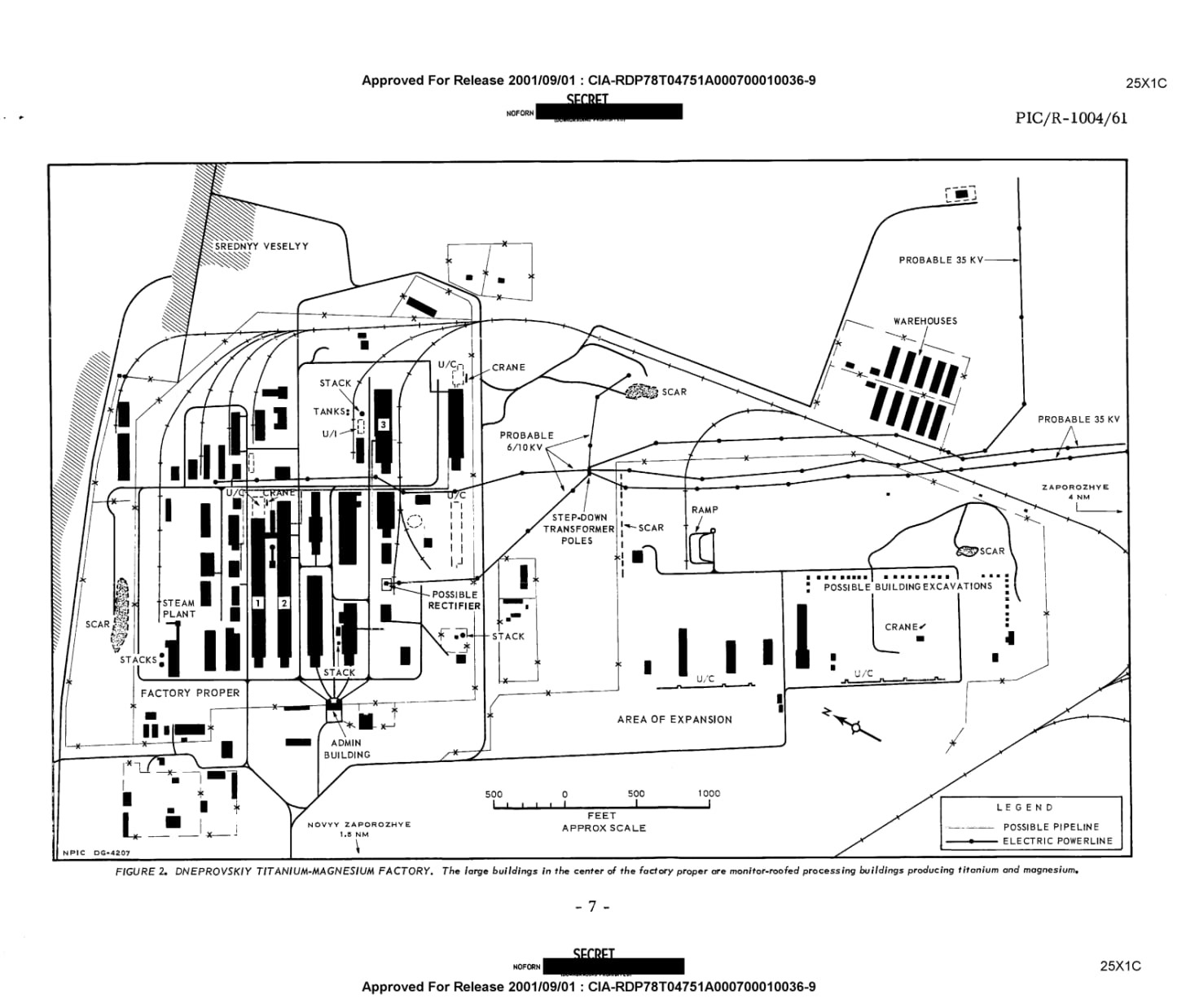
Zaporizhzhia titanium and magnesium plant. Screenshot taken from a Secret 1961 CIA document declassified in 2001. Around the time of the SR-71’s first flights, the CIA estimated that ZTMP produced 1,000 tons of raw titanium and 4,000 tons of titanium chloride annually – and the plant was still being expanded. The titanium giant was actively studied by the intelligence service through high-altitude photography and sources.
Whether the United States secretly obtained the underlying ore or the more refined raw titanium, the available evidence suggests that the SR-71 has a link to Ukraine.
Through the process of elimination, the CIA’s specific interest in the Ukrainian titanium plant, and the availability of titanium ore in nearby Ukrainian regions, it’s appropriate to conclude that Ukraine was likely part of the supply chain for the lightweight and strong metal.
The thickness of titanium in the SR-71 is comparable to a can of soda. The development of the SR-71 was estimated to cost $764 million for the aircraft and $125 million for the new engine.
The SR-71 also posed unique challenges for pilots. The flight itself required a special suit, similar to the one astronauts wear. Pilots were thus required to fly frequently, be experienced, and well-prepared physically.

Crew members of the Lockheed SR-71 (Blackbird) strategic reconnaissance aircraft. (Photo by Greg Mathieson/Mai/Getty Images). “It’s the only place [NASA] in my experience that I've ever had my boss tap me on the shoulder and say: ‘You're not flying enough,” said Smith. Pilots had to constantly stay sharp to be prepared for any possible emergency.
So Smith made a point to clock as many flying hours as he could, he said, often showing up at the airfield and saying something like, "I'd like to fly this afternoon at 1:00 PM." In most cases, that's exactly how it worked, he recalled.
The current state of the Zaporizhzhia Titanium-Magnesium Plant
The Zaporizhzhia Titanium-Magnesium Plant is situated on the left bank of Zaporizhzhia, in an industrial zone adjacent to other large enterprises, controlled by Ukraine and located inside the city. It was founded in 1935 and began titanium production in 1956. The enterprise is known as the only producer of raw titanium in Europe, though its operational capacity has suffered as a result of the war.
When Ukraine gained independence in 1991, the plant continued functioning.
Since the beginning of the full-scale war in February 2022, the plant has essentially ceased operations, with the enterprise focusing instead on selling products stored in its warehouses. Approximately 2,000 tons of titanium products were sold for a total of $7.5 million during 2022, according to RBK-Ukraine.
As of 2024, the enterprise owed millions of dollars in outstanding salaries and taxes due to the temporary work stoppage from 2022 until July 2024. Since 2022, total losses have exceeded $24 million.

(From bottom to top) Flight engineers Martha Bohn-Meyer and Bob Meter, and pilots Eddie Schneider and Rogers Smith, at NASA Dryden research center. Photo by NASA. However, officials in December 2024 stated that production of raw titanium is continuing. In revealing ways, the Ukrainians may have unwittingly helped their adversary again.
The enterprise was plunged into controversy in August 2023 when news outlet RBK-Ukraine wrote that the sales the company made during the war were to companies from Montenegro, Austria, Lithuania, and the Czech Republic that have ties to Russia.
These details were particularly alarming because titanium is used to manufacture components for cruise missiles, combat aviation, and other applications.
The State Property Fund, which controls ZTMP, denied the allegations made in the report, however.
Currently, the director is Yevhen Storchak, who took over the helm in July 2023. The Counteroffensive reached out to ZTMP plant representatives for comment, but never heard back. The plant's deputy director also didn't respond to our requests for comment.
The last flight
The SR-71 'Blackbird' journey ended in 1999. By coincidence, Rogers Smith made the last flight in the history of the outstanding reconnaissance aircraft.
This was at an air show where Smith and the research pilot Ed Schneider were scheduled to perform. Smith performed first, on Saturday. Schneider never got to perform, however, as the aircraft he was supposed to fly had broken down. Attempts were made to repair the plane, but the breakdown was too severe—a significant fuel leak had occurred, and the crew couldn't repair it in time.
Lockheed Martin produced 32 SR-71 planes, 12 of which were lost due to accidents involving things like engine failure and instrument malfunction. Most of the Blackbirds are now on display in museums all across the United States. The Air Force retired the SR-71 in 1990 due to overwhelming demand for fuel for long flights and the development of satellites for reconnaissance purposes. The Blackbird was then used by NASA for research, but it was replaced in 1999 with satellites and unmanned aerial drones.
“Luckily for me, I was one of the two pilots assigned to that program [SR-71 NASA research program]. And it was a magical and mystical airplane,” Smith said.
NEWS OF THE DAY
By: Clara Preve
THE FIRST CIVILIAN JET SEEN OVER KYIV SINCE THE WAR. An Antonov An-124 ‘Ruslan’ cargo jet was spotted flying over Kyiv on Friday, marking one of the first civilian aircraft to enter Ukrainian airspace since the start of Russia’s full-scale invasion.
Currently, only military and government flights are permitted over Ukraine under strict restrictions.
The flight landed at Germany’s Leipzig/Halle Airport, where Ukrainian aircraft manufacturer Antonov has relocated its operations hub, according to AeroTime. In the early days of the invasion, Russia destroyed Antonov’s Hostomel Airport—along with its flagship aircraft, the An-225 Mriya, the largest plane in the world.
RUSSIA, N KOREA STRENGTHEN TIES. Russia’s Foreign Minister Sergey Lavrov met with North Korean leader Kim Jong Un, who reaffirmed his support for Russia’s invasion of Ukraine.
The visit is the latest in a series of high-level trips by Moscow officials as the two countries deepen military and political ties. Pyongyang has emerged as one of Russia’s key allies in the war, reportedly sending thousands of troops and weapons.
South Korean intelligence now warns that more North Korean troops may be deployed to Russia in the coming months.
U.S. TO SEND AMMUNITION TO KYIV VIA NATO. The United States will continue supplying weapons to Ukraine via NATO, accelerating the delivery of urgently needed Patriot air defense systems amid intensified Russian attacks.
Under the arrangement, NATO will purchase the weapons from Washington and transfer them to Ukraine.
“We’re sending weapons to NATO, and NATO is paying 100 percent,” Trump said in an interview with NBC News. “The weapons are going to NATO, and then NATO is giving them to Ukraine,” he added.
DOG OF WAR
Today's Dog of War is Lary. Nastia met him at her university prom as she was getting her bachelor's diploma. We believe he is there to be awarded his LLM in legal studies.
Stay safe out there.
Best,
Oleksandr and Tim -
Analysis: Ahead of Trump's 'major' Russia announcement, what will happen next to Ukraine?
-
Trump agrees to provide aid, but who will pay?
-
Trump's envoy Kellogg to visit Ukraine on July 14
-
Trump promises 'major statement' on Russia, reveals new NATO weapons deal for Ukraine
-
Trump to send weapons to Ukraine for first time via presidential power, sources tell Reuters
-
Trump administration immigration policies leave Ukrainian refugees in limbo
-
Ukraine needs new Marshall Plan, Trump's envoy Kellogg says ahead of Recovery Conference
-
US Congress ready to move forward on Russia sanctions bill, but Trump wants changes, Politico reports
-
Amid Ukraine weapons debacle, Trump claims he 'would know' about any decision to halt shipments
-
Trump changed his mind? 💥 Harsh criticism of Putin after "trust" #shorts
-
Ukraine war latest: Russia launches record 741 drones, missiles at Ukraine
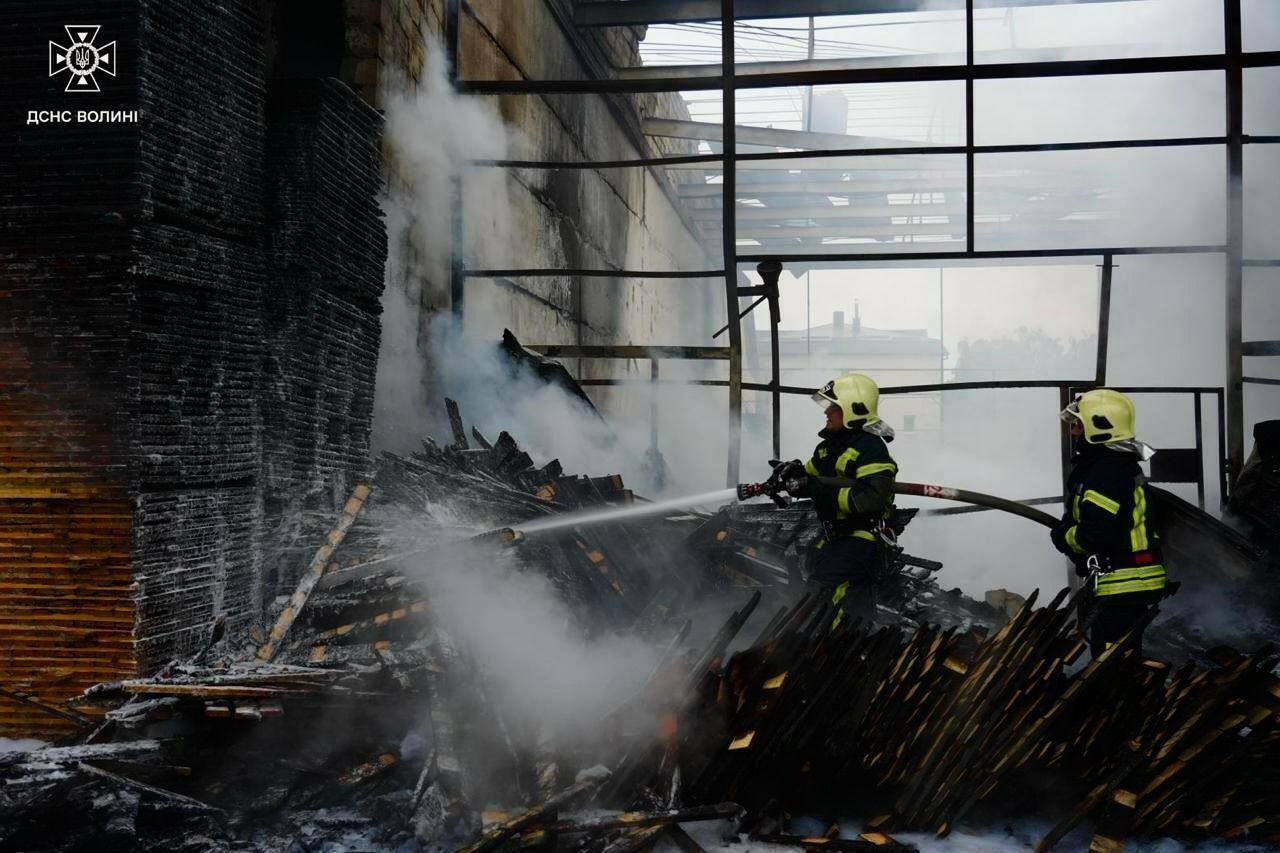
Key developments on July 9:
- ‘Nearly everything was aimed at Lutsk’ — Russia launches record 741 drones, missiles, targeting western Ukraine
- Trump says US will ‘take a look’ at sending new Patriot system to Ukraine amid Russian attacks
- In historic feat, Ukraine’s 3rd Brigade captures Russian troops using only drones and robots, military says
- Ukraine detains Chinese spies tasked with stealing Neptune missile technology, SBU says
- Slovakia continues to block EU’s 18th Russia sanctions package, media reports
Russia launched what appears to be its largest missile and drone attack against multiple Ukrainian cities overnight on July 9, with the far-western city of Lutsk coming under the heaviest attack of the war.
Russian forces deployed 728 Shahed-type attack drones and decoys, as well as seven Kh-101 or Iskander-K cruise missiles and six Kinzhal missiles, the Air Force said.
Late spring and early summer in Ukraine have been marked by disturbingly frequent mass attacks on civilian targets, with Russia regularly terrorizing cities with ballistic and cruise missiles alongside record-breaking numbers of kamikaze drones.
Explosions rocked Kyiv at around midnight on July 9, according to Kyiv Independent journalists on the ground. Mayor Vitali Klitschko announced that Russian drones were attacking the city center and that air defenses were shooting down targets.
Ukraine’s Air Force reported that dozens of Russian attack drones and ballistic missiles were also targeting Ukraine’s far-west regions, with alerts of overhead drones approaching the western cities of Lutsk, Lviv, Khmelnytskyi, and Ternopil.
Ukrainian air defenses shot down 296 drones and all seven cruise missiles, while 415 drones disappeared from radars, according to the statement.
“Most of the targets were shot down. Our interceptor drones were used — dozens of (Russian) targets were downed, and we are scaling up this technology,” President Volodymyr Zelensky said on X.
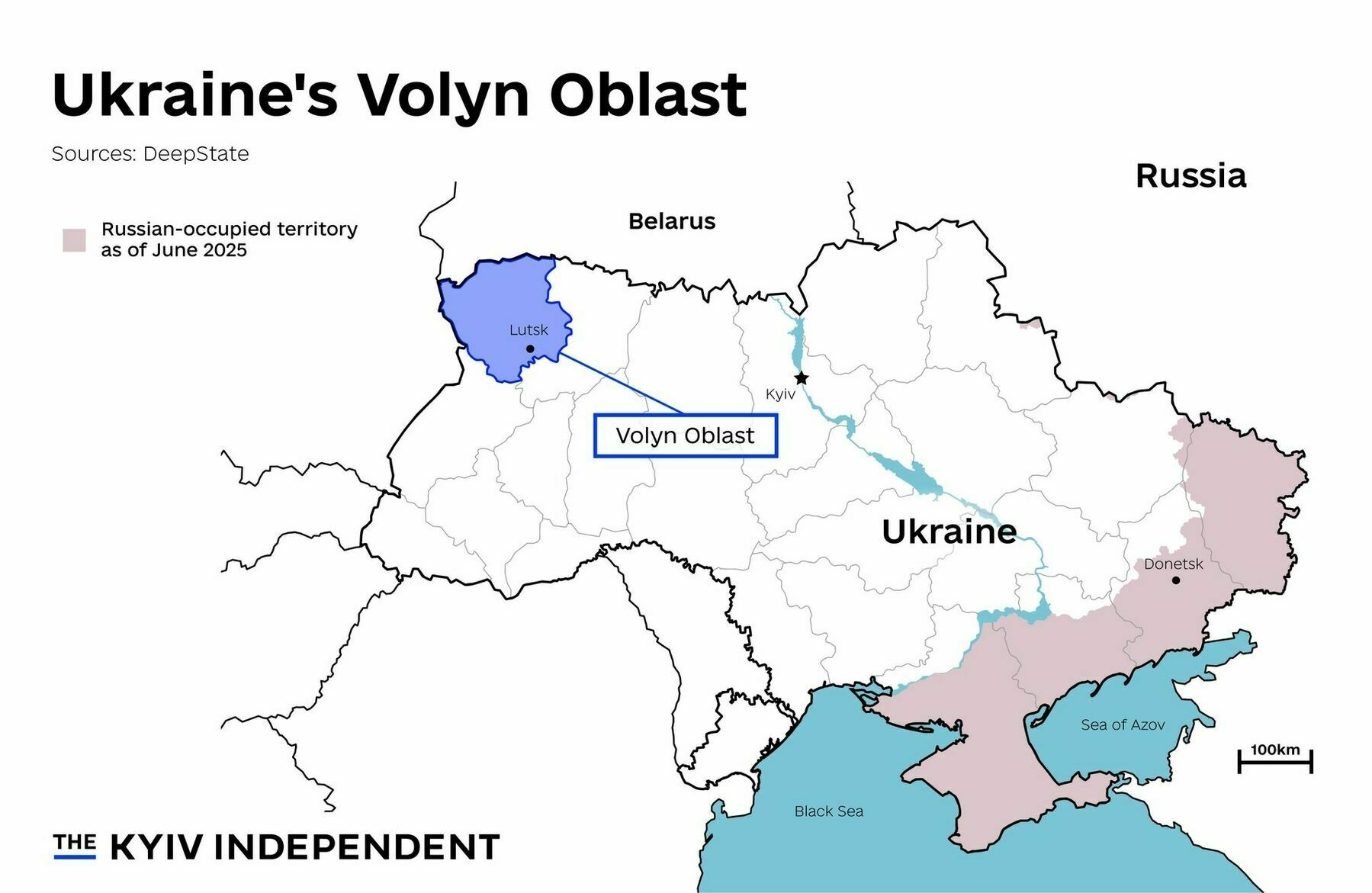
Ukraine’s Volyn Oblast (Nizar al-Rifai/The Kyiv Independent) Explosions were heard in the city of Lutsk in western Volyn Oblast just before 4 a.m. local time, Suspilne reported, amid warning of drones and missiles overhead. The city was one of the hardest hit during the attack.
Volyn Oblast Governor Ivan Rudnytskyi said the region had approximately 50 drones and five missiles present in the airspace overnight, adding that “nearly everything was aimed at Lutsk."
Lutsk Mayor Ihor Polishchuk said that a fire damaged an “industrial site” as well as a garage, in what he called the “most massive Russian attack” on the city since the start of full-scale war.
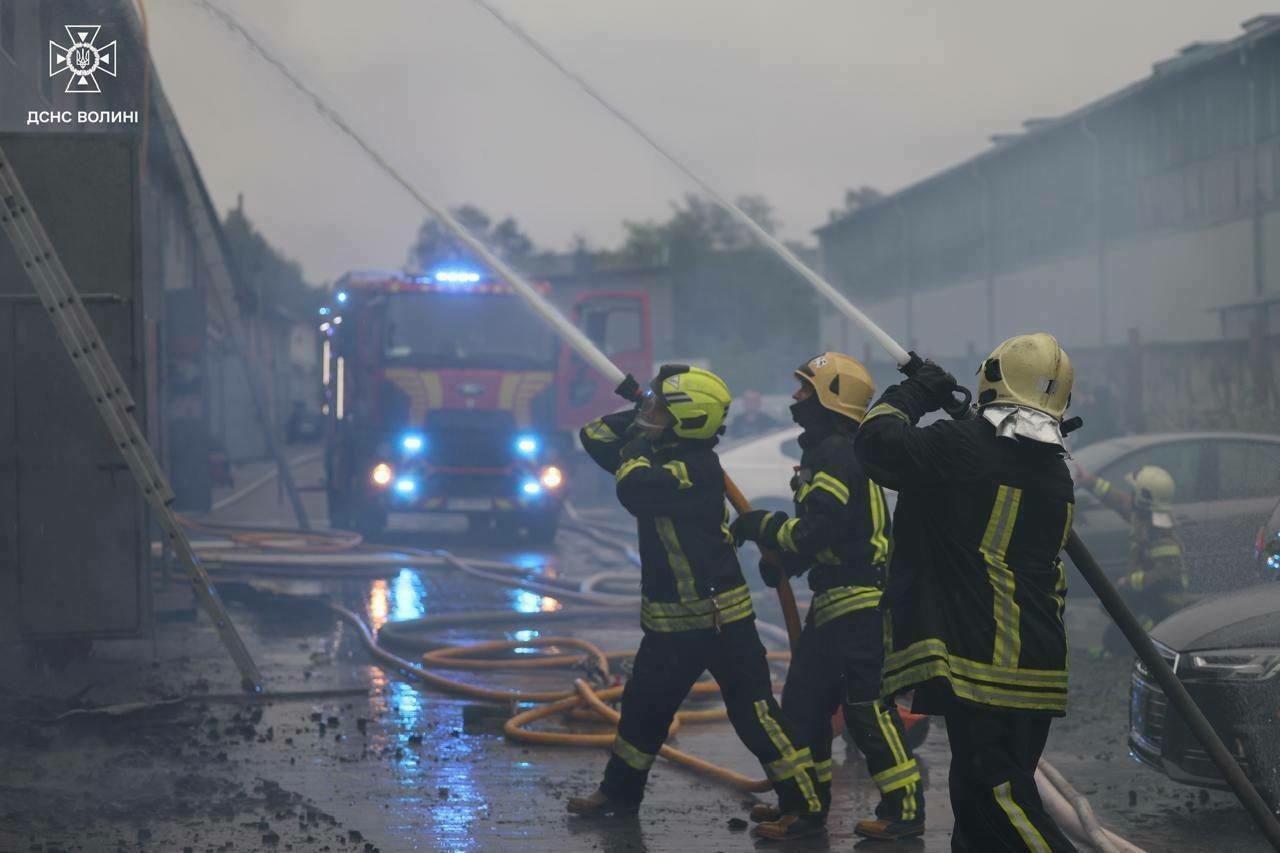
The aftermath of a Russian attack against Lutsk, Volyn Oblast, Ukraine, overnight on July 9, 2025. (State Emergency Service) Elsewhere in the region, the roof of a home in Khmelnytskyi Oblast caught fire, the regional military administration said.
At least one person was injured amid the attack, with a woman sustaining a chest fracture in the city of Brovary in Kyiv Oblast, the regional military administration reported.
Ukraine’s Air Force warned late on July 8 that Russia had launched MiG-31 aircraft from the Savasleyka airfield in Nizhny Novgorod, putting the entire country under an hours-long active missile threat. Swarms of drones were also heading towards multiple cities in Ukraine, the military said.
The Polish Air Force said it scrambled fighter jets amid the attack to protect Poland’s airspace. The air raid alerts were lifted in western Ukraine around 6:15 a.m. local time, after nearly seven hours of warnings from the Air Force.
Explosions were also reported in communities closer to the front line, including Dnipro, Sumy, as well as over Zaporizhzhia Oblast.
Russian ballistic missiles and kamikaze drones have targeted Kyiv and other Ukrainian cities with renewed ferocity in recent weeks, killing dozens of civilians and injuring hundreds more.
Zelensky meets Pope Leo XIV in Rome ahead of Ukraine Recovery ConferencePresident Volodymyr Zelensky arrived in Rome on July 9 and is set to meet with Pope Leo XIV, Suspilne broadcaster reported, citing the presidential spokesperson. The Kyiv IndependentMartin Fornusek
The Kyiv IndependentMartin Fornusek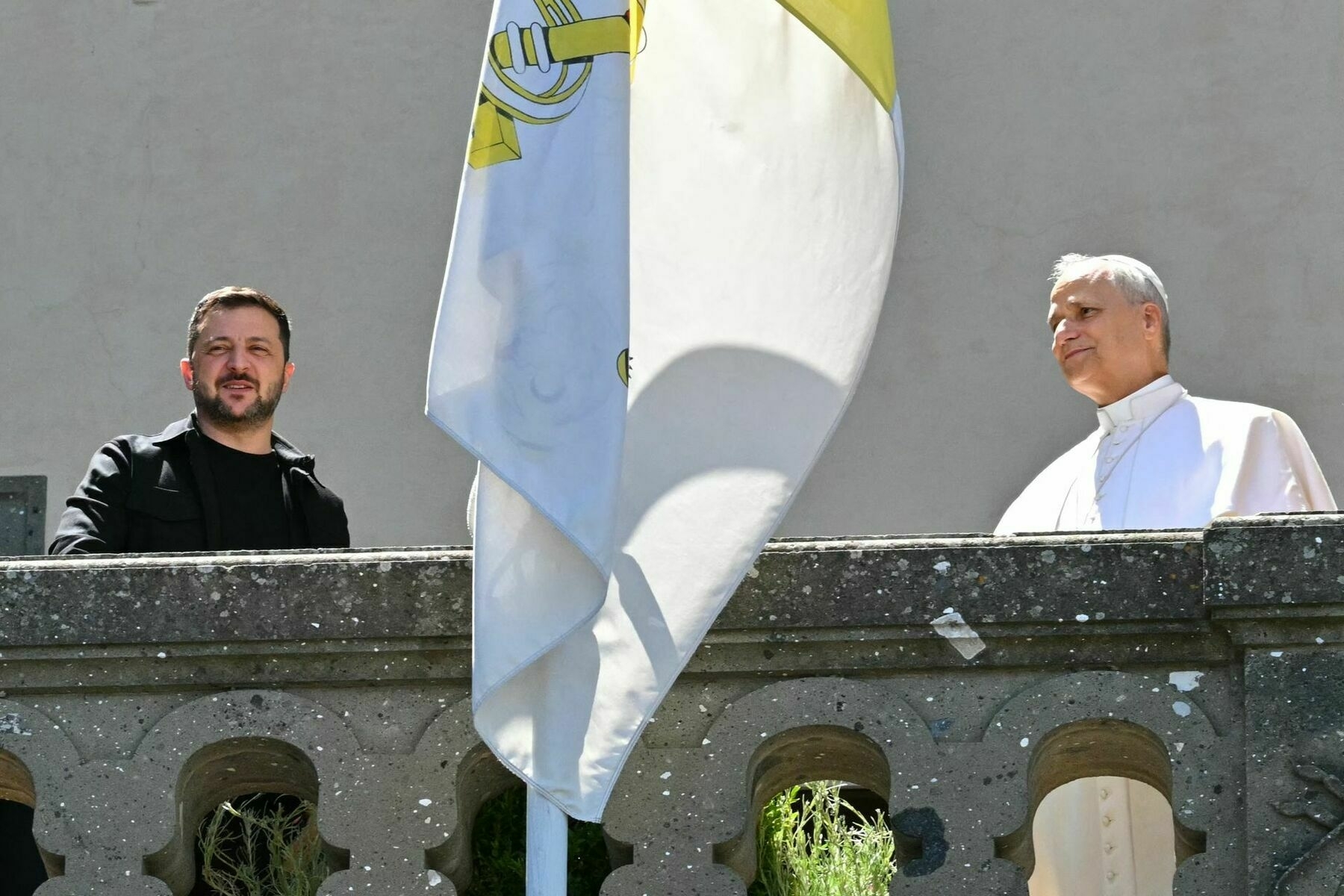
Trump says US will ‘take a look’ at sending new Patriot system to Ukraine amid Russian attacksU.S. President Donald Trump said on July 9 that his administration is “going to have to take a look” at supplying Ukraine with another Patriot air defense system.
“They would like it. They’ve asked for it,” Trump told reporters in the White House. “I know they made the request. We’re going to have to take a look at it."
“When you talk about a system like that… they’re doing it because they want to prevent death,” he added. “They’re getting hit hard, very hard. So we’re looking at it."
The comments follow a July 8 reporting by the Wall Street Journal (WSJ) that the White House is considering sending Ukraine a Patriot battery in what would be the administration’s first major new weapons transfer since taking office in January.
A U.S. defense official told WSJ that Trump has asked the Pentagon to explore options for supplying Ukraine with more arms, including whether additional Patriots could be sourced from allied countries.
According to Axios, the White House is working on a deal under which Germany would sell a Patriot battery to Ukraine, with the U.S. and European allies sharing the cost.
The proposal comes amid a series of conflicting signals from Washington. On July 2, the Pentagon announced a pause in deliveries of key military aid to Kyiv, including Patriot interceptors and precision-guided munitions.
Trump later denied involvement in the decision and expressed frustration with Russian President Vladimir Putin for failing to pursue a ceasefire.
Kyiv has repeatedly urged Western partners to expand air defense coverage as Russian forces continue to target Ukrainian cities with drones, missiles, and aerial bombs.
Patriot batteries, with their high-precision tracking and interception capabilities, are a cornerstone of Ukraine’s layered air defense system.
Washington has so far delivered three Patriot batteries to Ukraine, while Germany has sent three more. A European coalition has contributed an additional battery, though not all systems are currently operational due to maintenance rotations.
If approved, a new transfer would mark Trump’s first major military package to Ukraine not initiated by the previous Biden administration.
‘We need to learn how to live without America’ — Ukraine’s survival amid faltering U.S. aidUkrainians breathed a sigh of relief of sorts this week after it was confirmed that U.S. President Donald Trump had ordered the continuation of shipments of critical military aid after a brief pause. The days-long hiccup alarmed a Ukraine beset with ever-escalating Russian air strikes and a dwindling supply of the means to stop them, and is just the latest instalment of a saga riven with uncertainty over Washington’s willingness to give Ukraine what it needs to defend itself against Russia. A The Kyiv IndependentKollen Post
The Kyiv IndependentKollen Post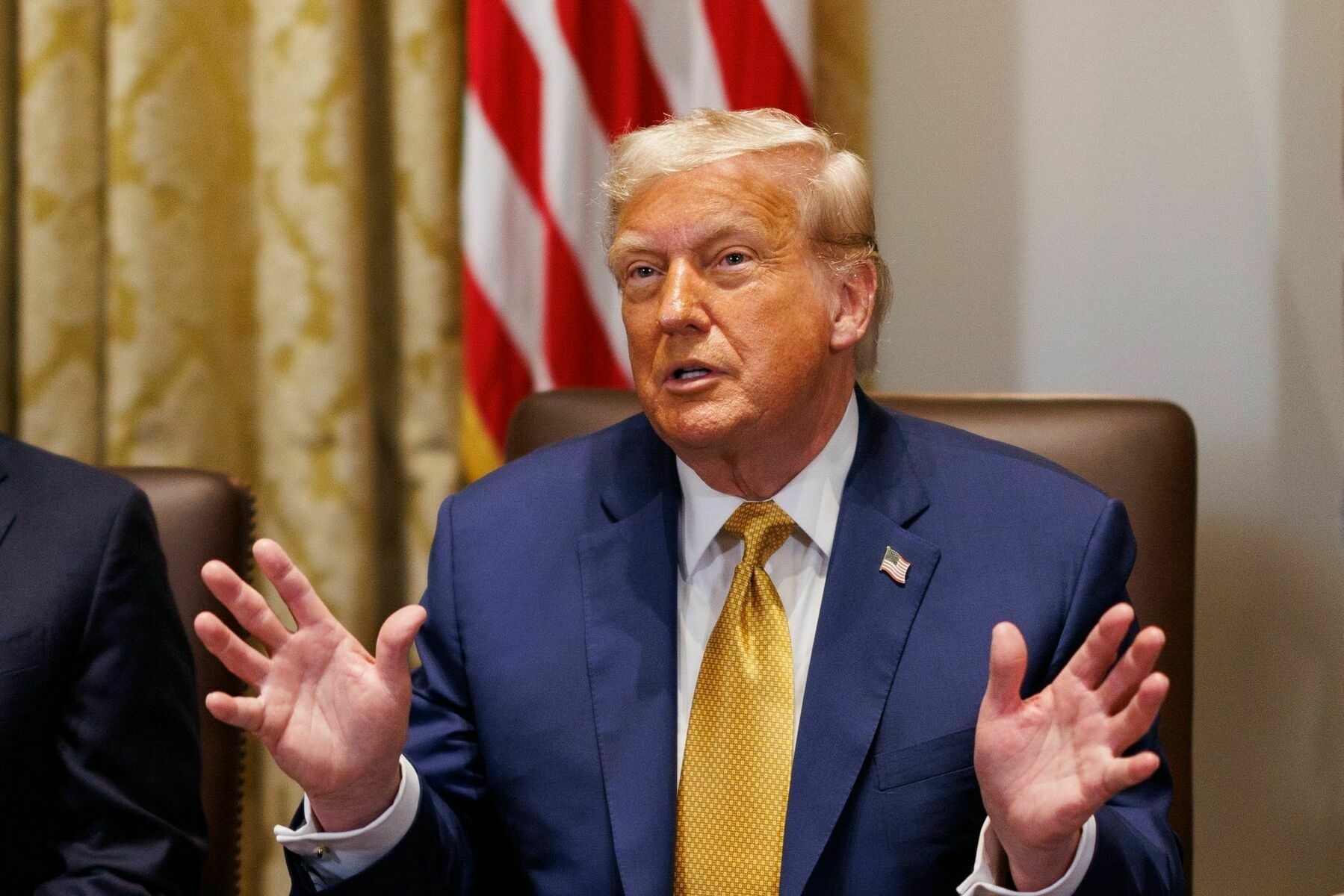
In historic feat, Ukraine’s 3rd Brigade captures Russian troops using only drones and robots, military saysUkrainian forces have for the first time captured Russian troops without the use of infantry, relying solely on drones and ground-based robotic systems, Ukraine’s 3rd Separate Assault Brigade said on July 9.
“For the first time in history: Russian soldiers surrendered to the 3rd Assault Brigade’s ground drones,” the statement read.
Ukraine has increasingly employed drone and robotic technologies on the battlefield as part of its broader strategy to minimize troop losses and adapt to evolving threats along the front line during Russia’s full-scale invasion.
The operation took place in Kharkiv Oblast in northeastern Ukraine, where the brigade deployed first-person view (FPV) drones and kamikaze ground robotic platforms to attack Russian fortifications, the brigade said in a statement.
The exact date of the operation was not provided.
0:00/Footage depicting a Ukrainian operation to capture Russian soldiers with the use of drone systems. Video published on July 9, 2025. (3rd Assault Brigade / Telegram) According to the brigade, Ukrainian forces targeted and destroyed Russian bunkers with kamikaze drones and robotic ground vehicles. As another robot approached a damaged Russian holdout, the remaining Russian soldiers reportedly chose to surrender.
The captured troops were then guided out of the combat zone by drones and taken into custody by Ukrainian forces, the brigade said.
The brigade added that the Russian positions had previously resisted capture by neighboring Ukrainian units, but the successful assault by unmanned systems allowed Ukrainian forces to take control of both Russian fortifications and a nearby forest line.
Russia responsible for MH17 downing, international law violations in Ukraine, Europe’s human rights court rulesThe ruling also found Russia responsible for the deadly downing of Flight MH17, a Malaysian airliner shot down by Russian proxy forces in Ukraine in July 2014. The Kyiv IndependentMartin Fornusek
The Kyiv IndependentMartin Fornusek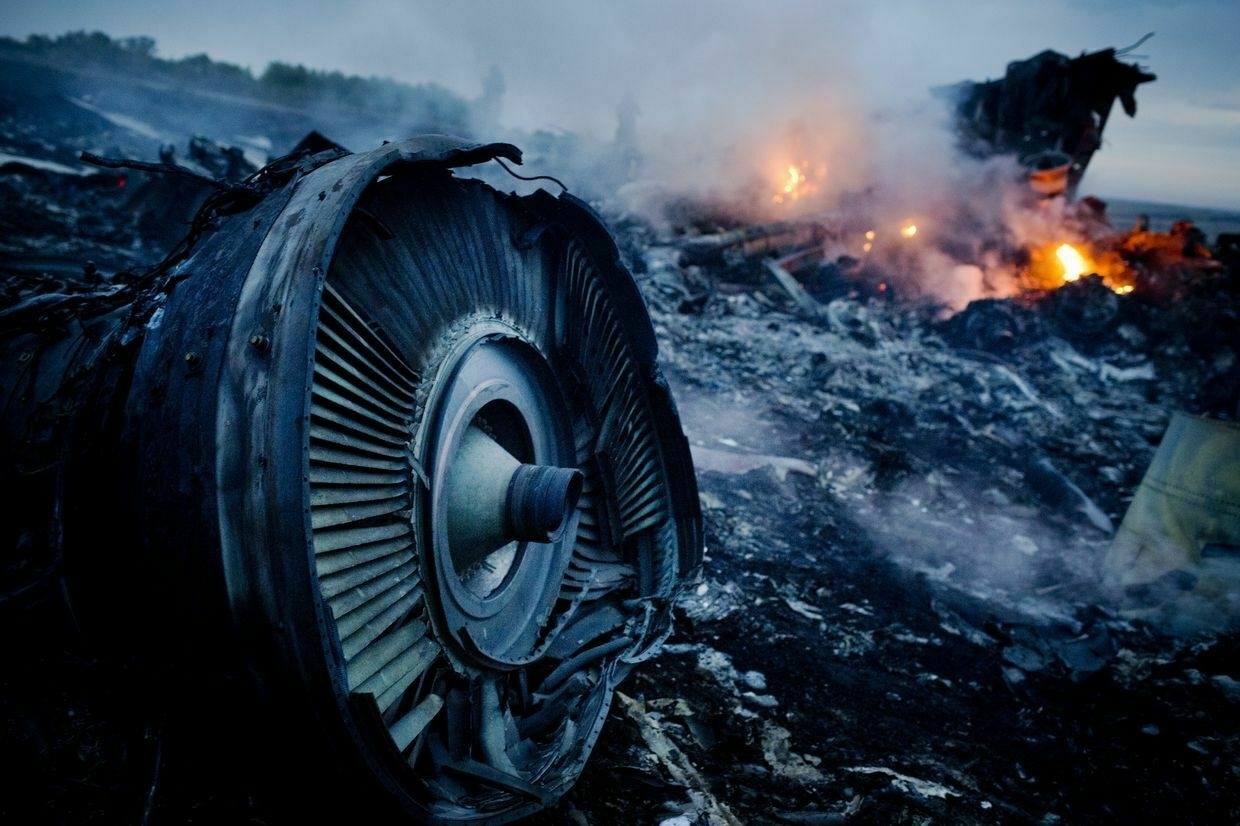
Ukraine detains Chinese spies tasked with stealing Neptune missile technology, SBU saysThe Security Service of Ukraine (SBU) has detained two Chinese nationals in Kyiv suspected of attempting to steal classified military technology related to Ukraine’s Neptune cruise missile system, the agency announced on July 9.
According to the SBU, the two individuals, a 24-year-old former student of a Kyiv technical university and his father, were gathering secret documentation with the intent to illegally transfer it to Chinese intelligence.
The younger man, who remained in Ukraine after being expelled from university in 2023 for poor academic performance, allegedly attempted to recruit a Ukrainian national with access to classified defense technologies in order to obtain technical data on the RK-360MC Neptune missile system.
China has emerged as one of Moscow’s key wartime partners, helping Russia circumvent sanctions and becoming the largest supplier of dual-use goods aiding its defense sector.
President Volodymyr Zelensky has repeatedly accused China of backing Russia and signed an order on July 8 imposing sanctions on five Chinese-registered companies for allegedly supplying components found in Russian Shahed-type drones used to attack Ukraine.
The Neptune, a Ukrainian-developed coastal defense missile, gained international attention after it was used to sink the Russian Black Sea Fleet flagship Moskva in 2022.
The SBU said the former student was caught “red-handed” during the transfer of sensitive documents, and his father was detained shortly afterward. Investigators allege the elder suspect, who resides in China but made periodic visits to Ukraine, personally supervised his son’s espionage activities.
Searches of the suspects' belongings uncovered mobile phones containing evidence of coordinated efforts to spy on Ukrainian military technology, including encrypted communications between the two men.
Both suspects have been charged with espionage. If convicted, they face up to 15 years in prison and confiscation of property.
Ukraine struck a Russian warehouse storing ammunition and reconnaissance drones with a Neptune missile near the village of Chaltyr in Russia’s Rostov Oblast in a January operation carried out by the SBU and Ukraine’s Navy.
Kremlin exacts loyalty amid tightening crackdown on Russian eliteThe Kremlin’s grip on the Russian elite appears to be closing ever tighter as two major figures of Russian business and security structures were detained in the past few days. Konstantin Strukov, a billionaire running a gold mining empire, and Viktor Strigunov, a former top officer in Russia’s National Guard, are now facing corruption accusations. While separate cases, they point to a push by Russian higher-ups to purge corrupt or potentially disloyal figures as Moscow grinds forward its full- The Kyiv IndependentMartin Fornusek
The Kyiv IndependentMartin Fornusek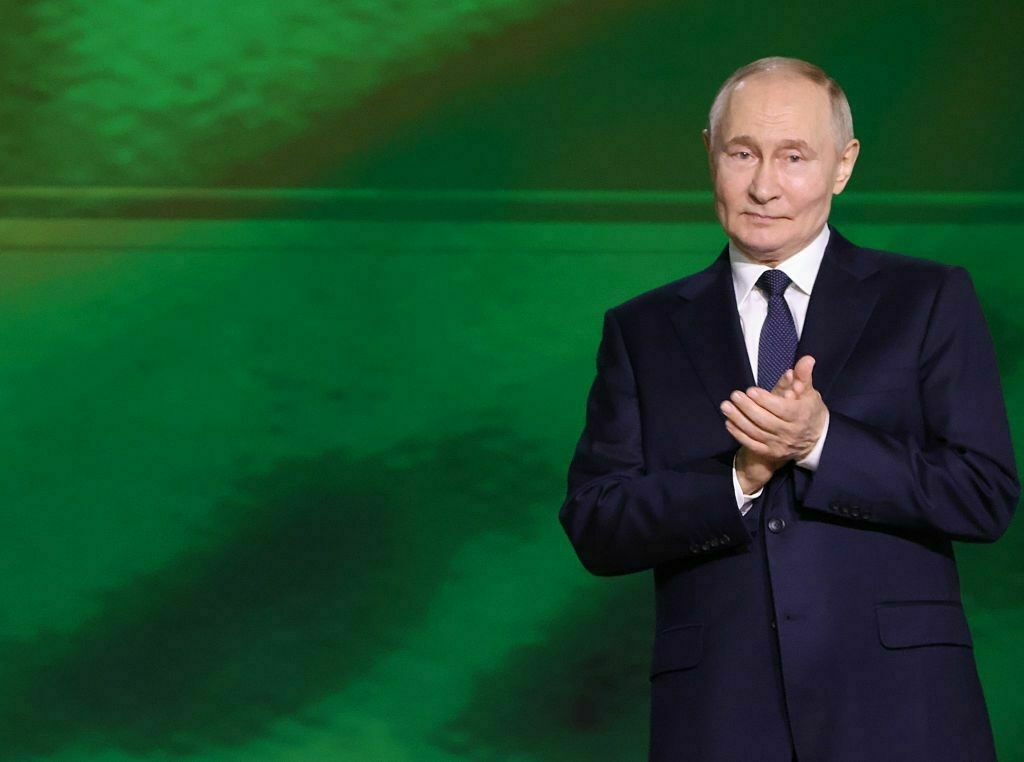
Slovakia continues to block EU’s 18th Russia sanctions package, media reportsEU ambassadors failed to approve the bloc’s 18th package of sanctions against Russia during a July 9 Committee of Permanent Representatives meeting, as Slovakia continued to block the measures, European Pravda reported, citing three unnamed EU diplomats.
Since EU sanctions require unanimous backing, a single country’s veto prevents the package from being implemented. In late June, both Slovakia and Hungary opposed the draft sanctions, stalling their adoption.
According to European Pravda, Slovakia’s position has not changed, despite what one EU diplomat described as “good and productive” talks between Bratislava and the European Commission on July 3.
Unlike Hungarian Prime Minister Viktor Orban, who has consistently opposed sanctions and military aid for Ukraine, Slovakia has not previously tried to block new EU measures.
Bratislava asked for a delay in adopting the latest package until the EU clarifies the financial implications of RePowerEU — an initiative to end reliance on Russian fossil fuels by 2030.
The sanctions package will be discussed again at a meeting scheduled for July 11. Sources told the outlet that a final agreement is expected this week, with formal adoption likely to take place at the EU Foreign Affairs Council meeting on July 15.
The 18th package includes new restrictions on Russia’s energy and banking sectors, as well as bans on transactions connected to the Nord Stream pipeline project.
These measures are part of the EU’s broader effort to increase economic pressure on Moscow as the Kremlin rejects calls for an unconditional ceasefire in Ukraine.
While the EU advances its sanctions framework, the United States has not introduced any new sanctions on Russia since President Donald Trump took office in January.
Note from the author:
Ukraine War Latest is put together by the Kyiv Independent news desk team, who keep you informed 24 hours a day, seven days a week. If you value our work and want to ensure we have the resources to continue, join the Kyiv Independent community.
-
Ukraine needs over $40 billion in foreign aid for 2026, prime minister says
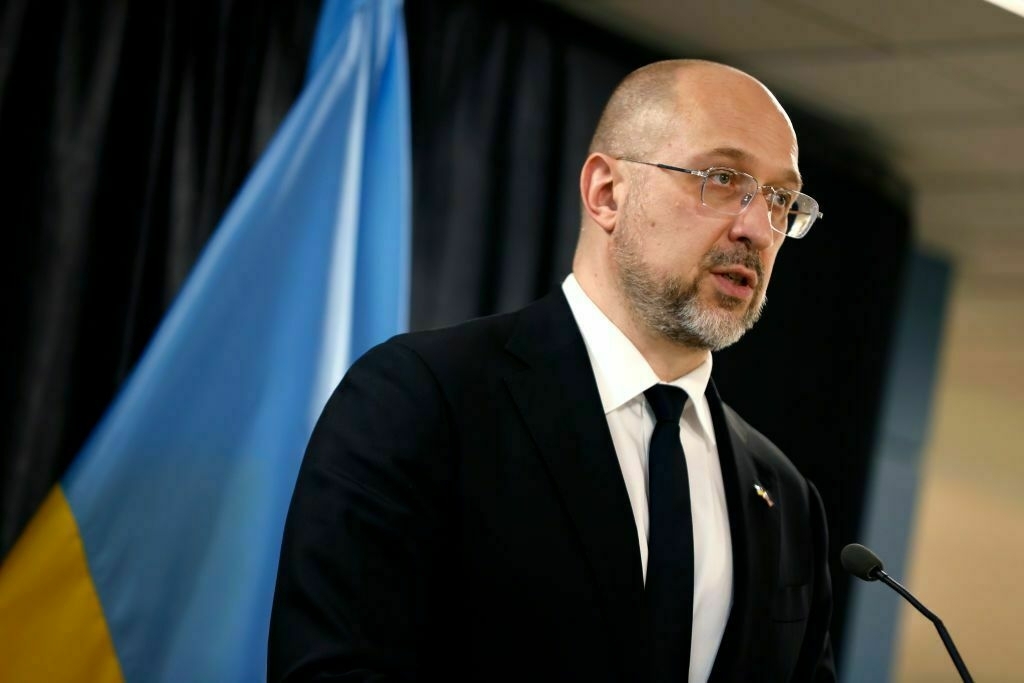
Ukraine will require more than $40 billion in external financial support in 2026 to sustain its economy and war effort, Prime Minister Denys Shmyhal said on July 9.
“The key task should be to develop mechanisms and tools that will allow us to attract these funds,” Shmyhal wrote on Telegram.
The remarks come as Kyiv scrambles to secure long-term financing while preparing to co-host the Ukraine Recovery Conference in Rome on July 10–11.
Shmyhal noted that the government submitted budget amendments in late June to increase defense spending by nearly $10 billion, bringing the total for security and defense in 2025 to around $50 billion, or 26% of Ukraine’s GDP.
“This will help to effectively counter the enemy,” he said, adding that Ukraine’s record defense budget includes $16.4 billion earmarked for weapons procurement.
While the budget’s own revenues are projected at $48.5 billion, the government has already secured $22 billion in foreign financing for 2025.
His comments follow a July 8 Financial Times article citing a projected budget deficit of $8 billion to $19 billion for 2026, largely due to declining U.S. contributions and the ongoing war.
A senior EU official told the outlet that many donors had previously expected a peace deal in 2025, but are now forced to revise their funding plans as Russia continues its offensive and rejects calls for an unconditional ceasefire.
‘We need to learn how to live without America’ — Ukraine’s survival amid faltering U.S. aidUkrainians breathed a sigh of relief of sorts this week after it was confirmed that U.S. President Donald Trump had ordered the continuation of shipments of critical military aid after a brief pause. The days-long hiccup alarmed a Ukraine beset with ever-escalating Russian air strikes and a dwindling supply of the means to stop them, and is just the latest instalment of a saga riven with uncertainty over Washington’s willingness to give Ukraine what it needs to defend itself against Russia. A The Kyiv IndependentKollen Post
The Kyiv IndependentKollen Post
-
Trump says US will 'take a look' at sending new Patriot system to Ukraine amid Russian attacks

U.S. President Donald Trump said on July 9 that his administration is “going to have to take a look” at supplying Ukraine with another Patriot air defense system.
“They would like it. They’ve asked for it,” Trump told reporters in the White House. “I know they made the request. We’re going to have to take a look at it."
“When you talk about a system like that… they’re doing it because they want to prevent death,” he added. “They’re getting hit hard, very hard. So we’re looking at it."
The comments follow a July 8 reporting by the Wall Street Journal (WSJ) that the White House is considering sending Ukraine a Patriot battery in what would be the administration’s first major new weapons transfer since taking office in January.
A U.S. defense official told WSJ that Trump has asked the Pentagon to explore options for supplying Ukraine with more arms, including whether additional Patriots could be sourced from allied countries.
According to Axios, the White House is working on a deal under which Germany would sell a Patriot battery to Ukraine, with the U.S. and European allies sharing the cost.
The proposal comes amid a series of conflicting signals from Washington. On July 2, the Pentagon announced a pause in deliveries of key military aid to Kyiv, including Patriot interceptors and precision-guided munitions.
Trump later denied involvement in the decision and expressed frustration with Russian President Vladimir Putin for failing to pursue a ceasefire.
Kyiv has repeatedly urged Western partners to expand air defense coverage as Russian forces continue to target Ukrainian cities with drones, missiles, and aerial bombs.
Patriot batteries, with their high-precision tracking and interception capabilities, are a cornerstone of Ukraine’s layered air defense system.
Washington has so far delivered three Patriot batteries to Ukraine, while Germany has sent three more. A European coalition has contributed an additional battery, though not all systems are currently operational due to maintenance rotations.
If approved, a new transfer would mark Trump’s first major military package to Ukraine not initiated by the previous Biden administration.
Kremlin exacts loyalty amid tightening crackdown on Russian eliteThe Kremlin’s grip on the Russian elite appears to be closing ever tighter as two major figures of Russian business and security structures were detained in the past few days. Konstantin Strukov, a billionaire running a gold mining empire, and Viktor Strigunov, a former top officer in Russia’s National Guard, are now facing corruption accusations. While separate cases, they point to a push by Russian higher-ups to purge corrupt or potentially disloyal figures as Moscow grinds forward its full- The Kyiv IndependentMartin Fornusek
The Kyiv IndependentMartin Fornusek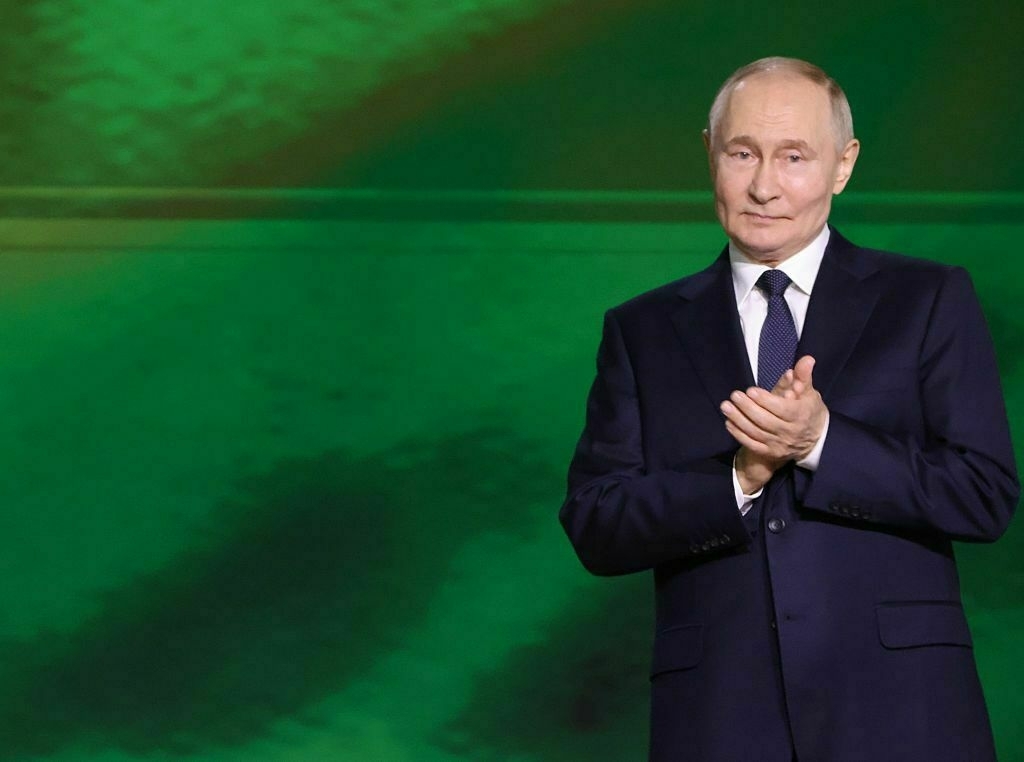
-
Zelensky meets Trump's envoy Kellogg in Rome
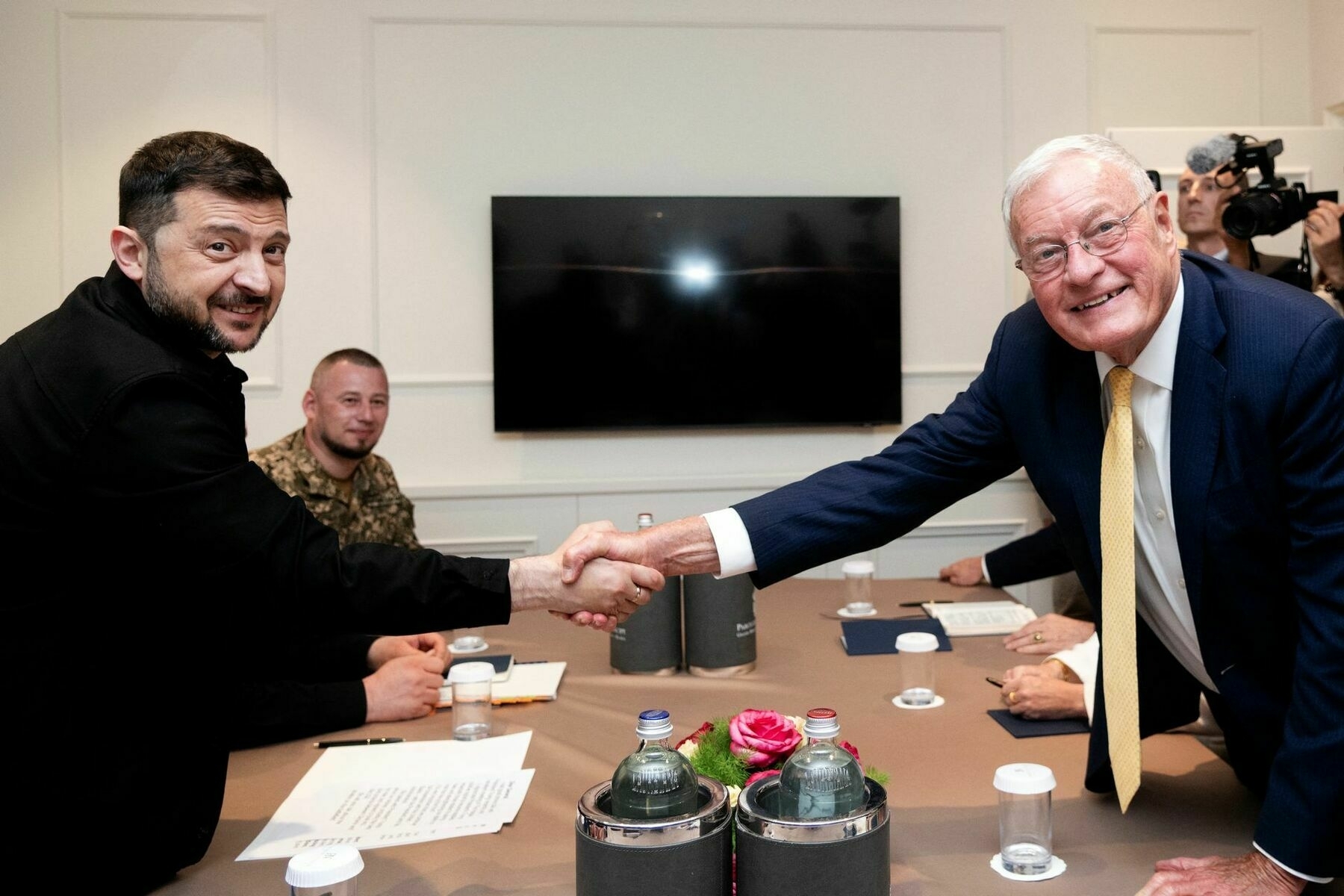
Editor’s note: This item is being updated.
President Volodymyr Zelensky met with U.S. Special Envoy for Ukraine Keith Kellogg in Rome on July 9, marking their second official meeting.
The meeting comes on the eve of the Ukraine Recovery Conference, co-hosted by Ukraine and Italy on July 10–11. It marks the fourth major international event focused on mobilizing political and private-sector support for Ukraine’s reconstruction.
Kellogg, a prominent figure in U.S. President Donald Trump’s administration, has led recent diplomatic outreach with Ukrainian leadership.
Before his meeting with Kellogg, Zelensky met with Pope Leo at Castel Gandolfo, the papal summer residence south of Rome. He also met with Italian President Sergio Mattarella.
The recovery conference opens as Ukraine continues to absorb daily aerial bombardments and repel Russian ground offensives across the front line. The destruction has placed immense pressure on Ukraine’s economy and infrastructure.
The Financial Times reported on July 8 that Kyiv faces a projected $19-billion budget deficit in 2025, driven largely by declining U.S. assistance and the absence of a breakthrough toward a ceasefire.
A senior EU official told the outlet that Western donors had previously anticipated a peace agreement by next year but are now preparing for continued hostilities.
As the Trump rollercoaster continues, Ukraine struggles to work out where it standsUkrainians breathed a sigh of relief of sorts this week after it was confirmed that U.S. President Donald Trump had ordered the continuation of shipments of critical military aid after a brief pause. The days-long hiccup alarmed a Ukraine beset with ever-escalating Russian air strikes and a dwindling supply of the means to stop them, and is just the latest instalment of a saga riven with uncertainty over Washington’s willingness to give Ukraine what it needs to defend itself against Russia. A The Kyiv IndependentKollen Post
The Kyiv IndependentKollen Post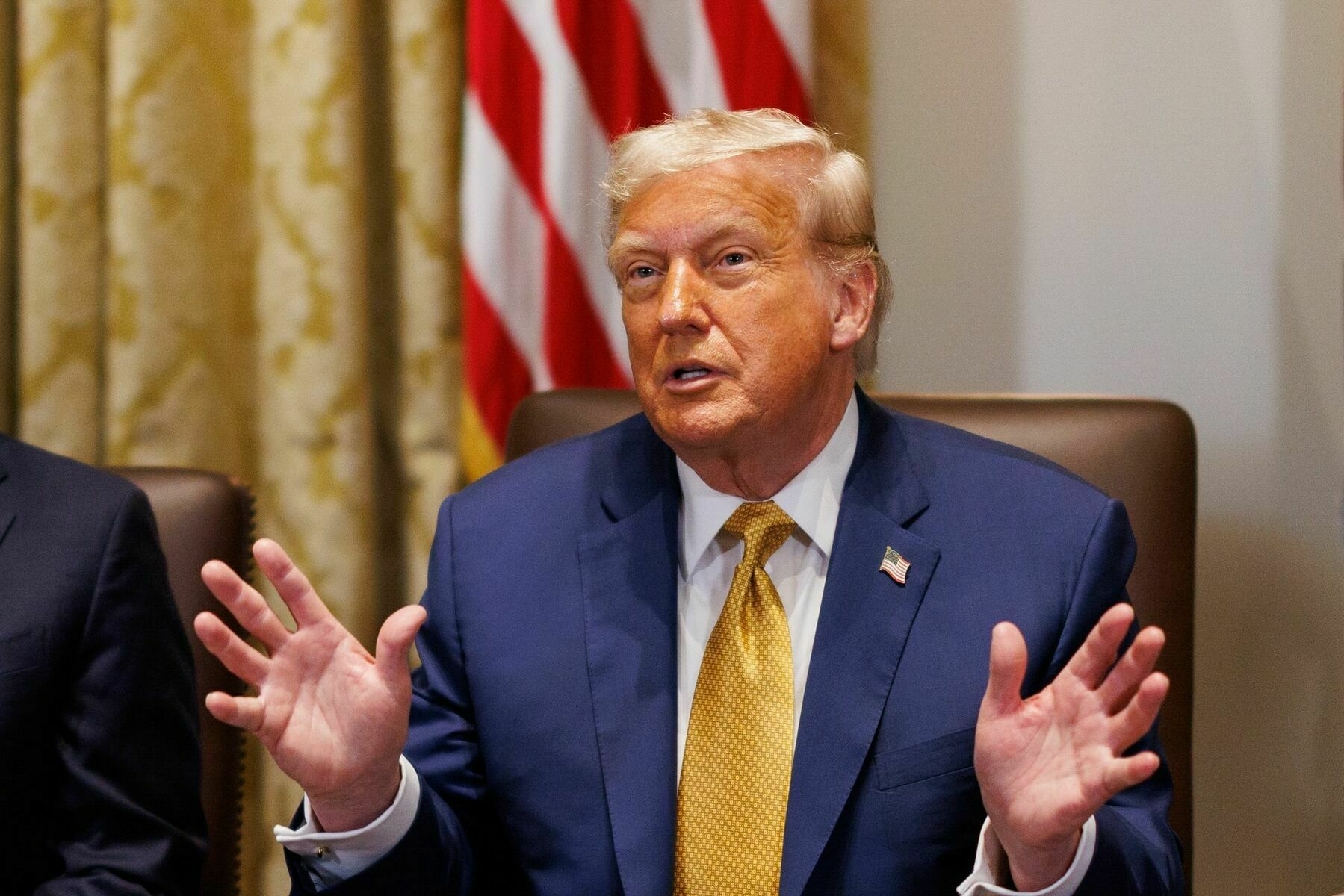
-
Kremlin exacts loyalty amid tightening crackdown on Russian elite
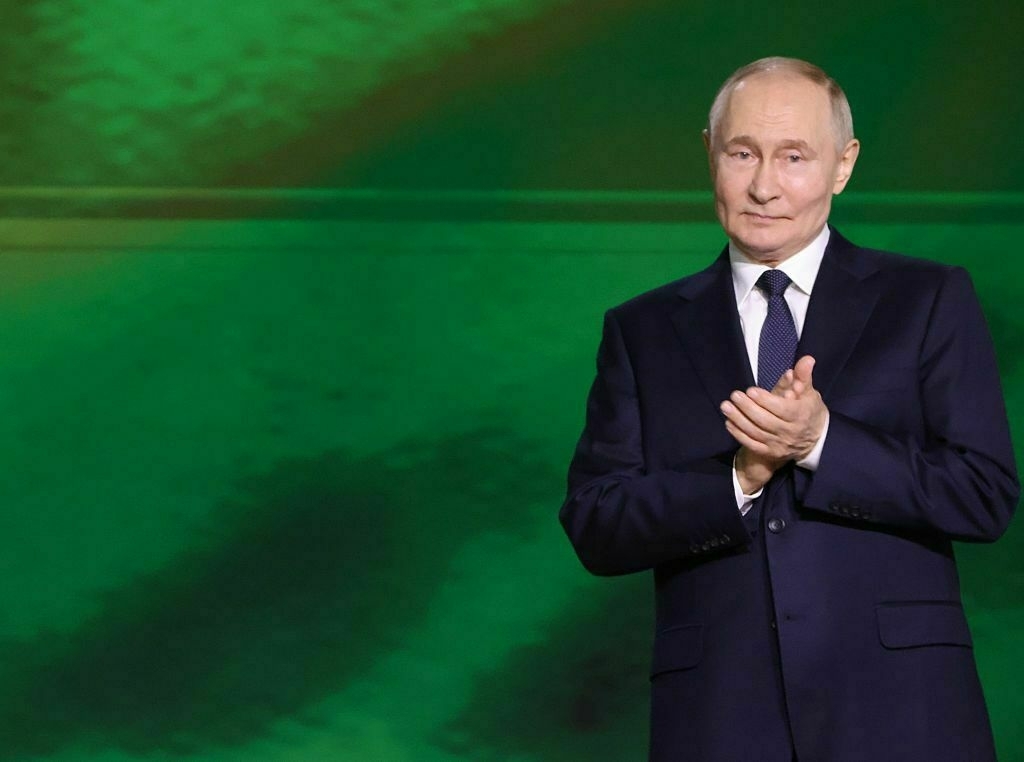
The Kremlin’s grip on the Russian elite appears to be closing ever tighter as two major figures of Russian business and security structures were detained in the past few days.
Konstantin Strukov, a billionaire running a gold mining empire, and Viktor Strigunov, a former top officer in Russia’s National Guard, are now facing corruption accusations.
While separate cases, they point to a push by Russian higher-ups to purge corrupt or potentially disloyal figures as Moscow grinds forward its full-scale war on Ukraine.
“I would certainly say that there has been an increased crackdown (on the Russian elite),” says Stephen Hall, assistant professor in Russian and post-Soviet politics at the University of Bath.
The Russian state is “trying to send the signal that loyalty is important… You can be corrupt, but don’t be too excessively corrupt without showing loyalty."
Death of top Russian oil executive fuels fresh scrutiny of elite’s ‘window falls’The unexplained death of a top Russian oil executive on July 4 is fueling renewed scrutiny over the rising number of high-profile Russian officials and businessmen who have died under mysterious circumstances, specifically, have fallen out of windows. Andrei Badalov, vice president of Transneft, Russia’s largest state-controlled pipeline transport company, died after falling from the window of his apartment in Moscow. Russian state news agency TASS, citing law enforcement sources, claimed the The Kyiv IndependentTim Zadorozhnyy
The Kyiv IndependentTim Zadorozhnyy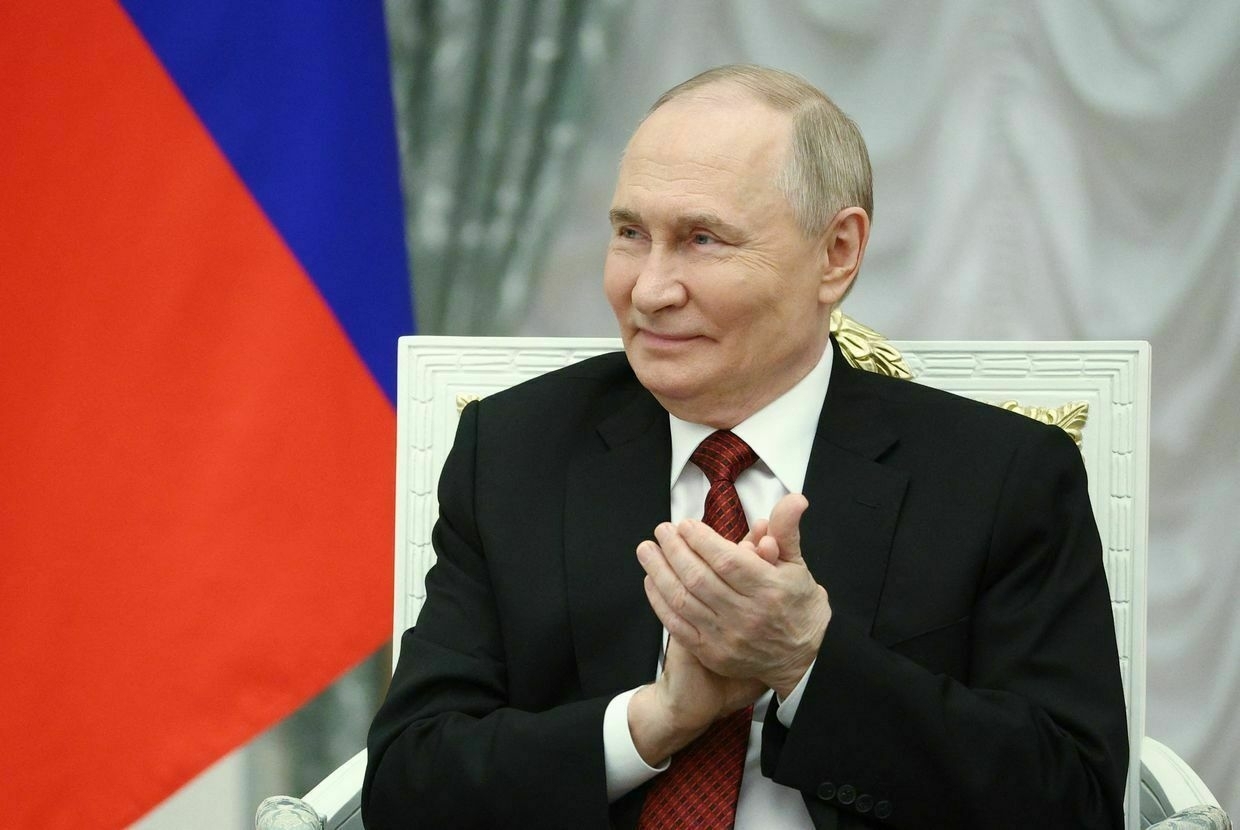
Gold mining magnate detainedStrukov was caught attempting to leave Chelyabinsk for Turkey on a private jet despite an earlier court ban on traveling abroad, Kommersant reported on July 5. As the pro-Kremlin news outlet wrote, Russian authorities boarded the aircraft and seized the businessman’s passport.
The detention followed a court ruling on July 2 that Strukov and his family cannot leave the country as Russian prosecutors seek to seize his assets.
The same day, the Federal Security Service (FSB) and the Investigative Committee raided the offices of Strukov’s Yuzhuralzoloto group as part of an investigation into alleged environmental and safety violations.
Though Strukov’s relatives and company denied his attempt to flee, Kommersant shared a picture of the billionaire sitting despondent on board the plane, surrounded by black-clad officers.
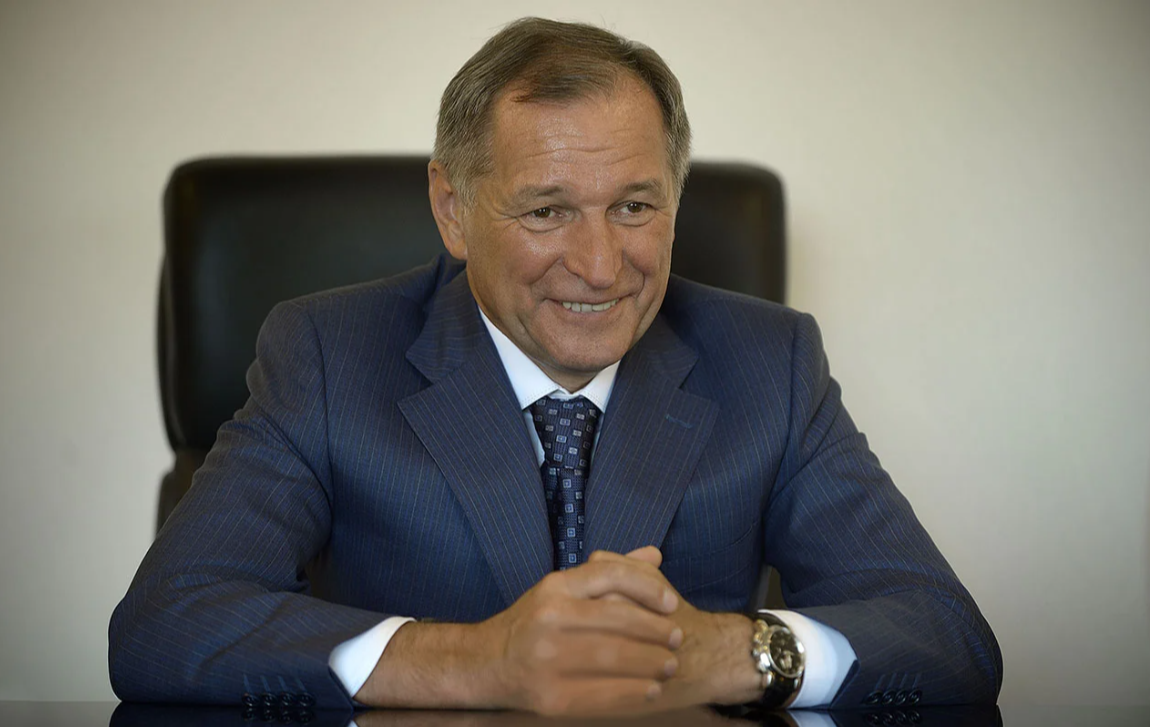
Konstantin Strukov. (WikiJournal) A Chelyabinsk court told Reuters that Russian prosecutors suspect Strukov of acquiring property “through corruption,” while Kommersant wrote the billionaire allegedly used his official position to transfer assets to his company.
The Russian Prosecutor General’s Office now reportedly calls for the transfer of Strukov’s shares and stakes in 11 companies, including the Yuzhuralzoloto group, Russia’s third-largest gold producer, into state ownership.
The company is currently registered under Strukov’s daughter, Alexandra, who holds Swiss citizenship.
The case mirrors earlier state takeovers during the full-scale war against Ukraine, presented as an anti-corruption campaign. It comes at a time when Russia is grappling with a widening budget deficit and an overheating economy.
The case could signal that the “Russian economy is not doing as well as Putin keeps on publicly saying that it is,” Hall told the Kyiv Independent.
“We’re starting to see that the ever-shrinking pie, as it were, needs to be redistributed… it may be that his (Strukov’s) assets are being taken over in order to be redistributed to someone closer to Putin."
The nationalization drive peaked in 2024, when the state seized at least 67 companies with a total asset valuation of 544.7 billion rubles (about $7 billion), the Moscow Times calculated. Companies whose owners were suspected of Western connections were particularly targeted.
The Kremlin walks a tightrope here
— Tim White (@TWMCLtd) July 5, 2025
It’s sold more foreign currency reserves this week to stave off collapse. So now it shakes down oligarchs.
Gold-mining billionaire Konstantin Strukov is arrested on his private jet as he tried to leave for Turkiye. Russia wants all his assets pic.twitter.com/HIj1vteohLStrukov's family owns businesses in Serbia and Montenegro, and Russian authorities reportedly accused him of funneling money from Russia to "unfriendly countries."
Russia likely doesn't want key national assets like gold "in the hands of someone that it doesn't necessarily trust, a man who has been sending money abroad to 'unfriendly countries,'" Hall said.
A former coal miner, Strukov took over Yuzhuralzoloto — at the time on the verge of bankruptcy — in 1997, restructuring it and building up sizeable holdings in the gold and coal mining sectors.
According to Forbes, the gold mining magnate is the 78th richest man in Russia with a net worth of $1.9 billion. Strukov is also a member of the Chelyabinsk legislative assembly for Putin's United Russia party. He is sanctioned by the U.S., the EU, and the U.K.
The Kremlin has declined to comment on the case when approached by the Russian media.
Defense officials in the crosshairsAs the Russian state tightens its grip on business, it also continues to "clean up" the security structures.
Colonel General Viktor Strigunov, first deputy director of the Russian National Guard (Rosgvardiya) until 2023, has been detained on suspicion of bribery and abuse of power, the Russian state media reported on July 7.
Strigunov, while in charge of a multi-million dollar contract for the construction of a training facility in Siberian Kemerovo Oblast in 2014, ordered the project to proceed despite existing restrictions, according to RIA Novosti.
The project was never completed, causing the state to lose over 2 billion rubles (over $25 million).
The former official is also accused of taking bribes of over 66 million rubles (over $840,000) from private companies between 2012 and 2014 in exchange for patronage during major state construction projects.
Strigunov is not the first National Guard official embroiled in a corruption case this year.
Major General Konstantin Ryabykh was fired and detained in February over suspected bribery, while Major General Mikhail Varentsov was arrested on fraud charges in April.
Hall links the cases to a broader Kremlin crackdown on Russia's defense groups. On July 1, former Deputy Defense Minister Timur Ivanov was sentenced to 13 years for bribery in a case dating back to a broader anti-graft campaign against defense officials in 2024.
However, Strigunov's case is especially notable because after his dismissal as the National Guard's deputy head in 2023, he served as an advisor to the force's chief and Putin's close ally, Viktor Zolotov.
"It could be that Zolotov is also trying to save his skin, having perhaps been a bit too corrupt," Hall says, suggesting that the National Guard chief has selected Strigunov to be his "fall guy."
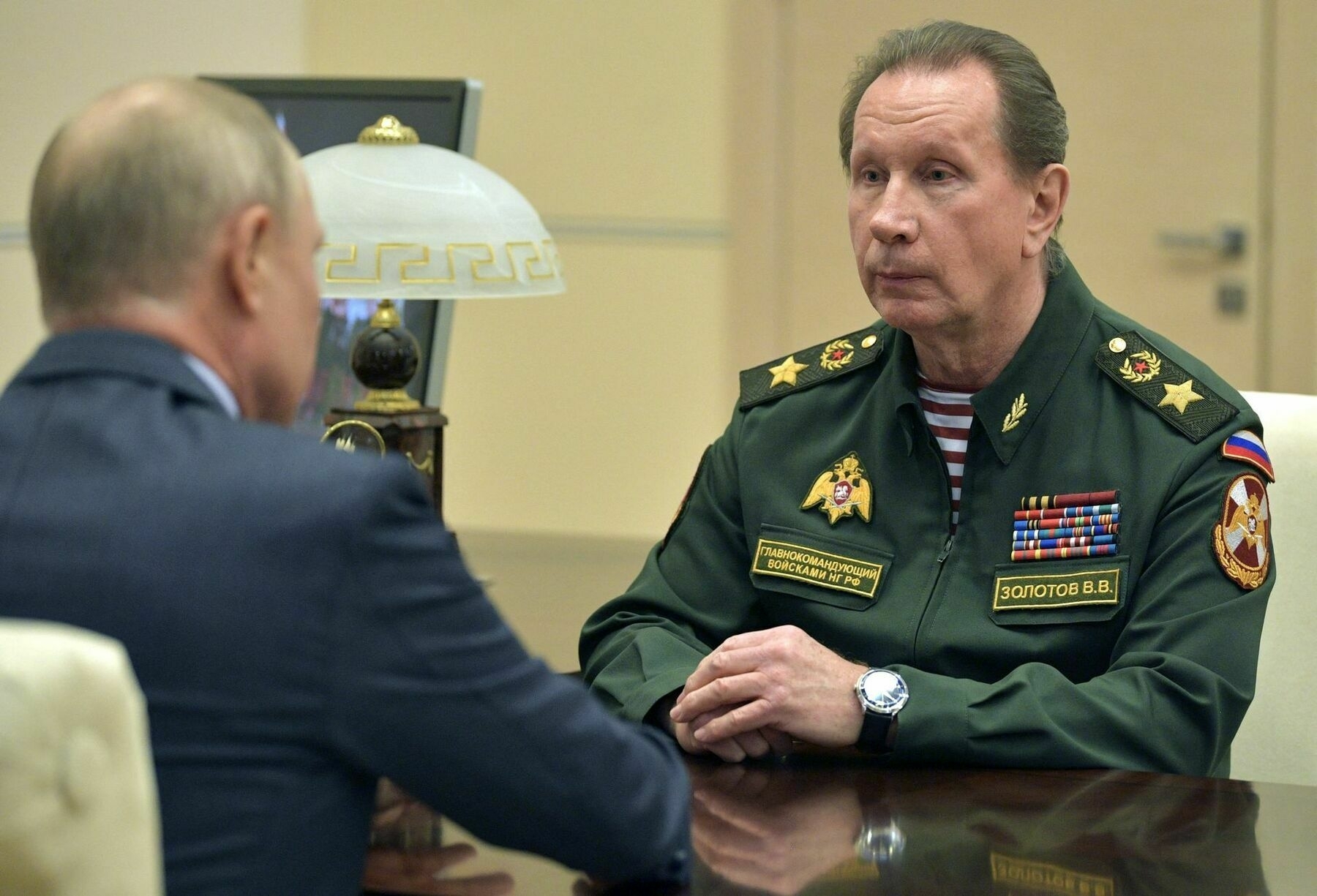
Russian President Vladimir Putin meets with the chief of the National Guard, Viktor Zolotov, at the Novo-Ogaryovo state residence outside Moscow on May 6, 2020. ( Alexey Druzhninin/Sputnik/AFP via Getty Images) Mounting crackdown on Russian eliteThis week's cases are only the latest in a string of firings and arrests in the more than three years of the full-scale war.
The atmosphere of anxiety among the Russian elite is growing even heavier amid mysterious suicide cases.
Just on July 7, the Russian media reported that Transport Minister Roman Starovoit shot himself dead in Odintsovo shortly before or after being fired by Putin.
Starovoit was reportedly implicated in a major embezzling scandal while he was governor of Kursk Oblast. His former deputy, Alexei Smirnov, has already been arrested in the case, which centers around the construction of fortifications in the border region.
Other government and business officials have met untimely deaths in the past years, often falling out of windows under unclear circumstances. Although these cases are usually labelled by Russian authorities as suicides or accidents, some observers suggest a deliberate motive.
While Hall observes mounting pressure against the Russian elite, Russian journalist and opposition activist Sergey Parkhomenko says the events could be seen instead as elite infighting.
"The law enforcement agencies are part of the Russian elite, and it appears that this elite is pressuring itself and from within," he told the Kyiv Independent.
"Russian power structures are closed off inside Russia like a hermetic jar... Therefore, pressure within this environment is growing, and its participants are constantly devouring each other. All this is quite chaotic in nature."
Trump claims he told Putin he would ‘bomb the sh*t out of Moscow’ if Russia attacked Ukraine, CNN reports“With Putin I said, ‘If you go into Ukraine, I’m going to bomb the sh*t out of Moscow. I’m telling you I have no choice,’” Donald Trump told a group of donors in 2024, according to CNN. The Kyiv IndependentMartin Fornusek
The Kyiv IndependentMartin Fornusek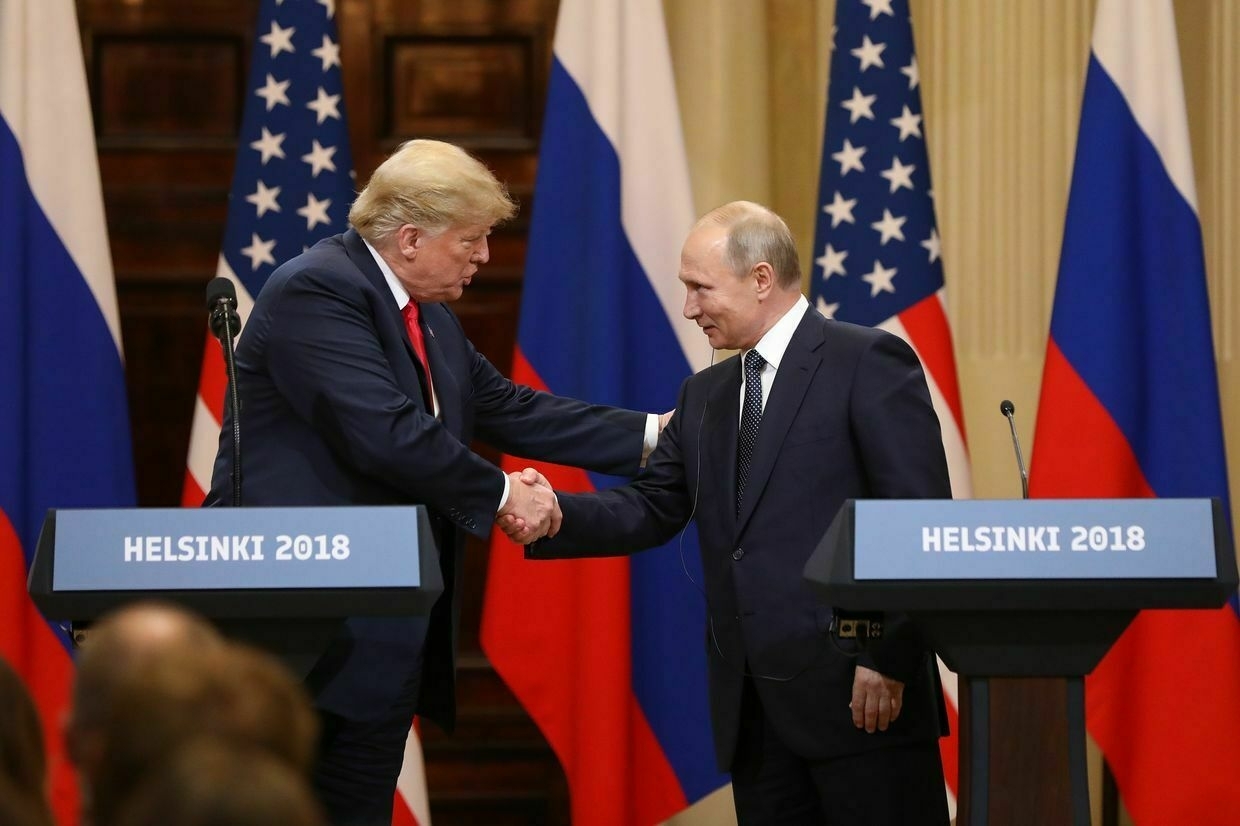
-
US Army to sharply increase Patriot missile purchases in fiscal year 2026, media reports

The U.S. Army intends to spend more than $1.3 billion on Patriot missile interceptors in fiscal year 2026, Bloomberg reported on July 9.
Internal Pentagon documents reportedly revealed that the Army has boosted its planned purchases of the most advanced Patriot interceptors from 3,376 to 13,773.
The move follows a Defense Department assessment that the U.S. currently holds only 25% of the interceptors needed to meet military requirements.
The Pentagon’s munitions tracker, used to measure the minimum supplies needed for U.S. war plans, reportedly showed Patriot interceptor levels had fallen below acceptable levels.
Budget documents show the U.S. purchased 2,047 PAC-3 MSE missiles by the end of fiscal year 2024, with 230 more bought in 2024 and 214 expected this year.
For 2026, the Army has requested $945.9 million to acquire another 224 interceptors — $549.6 million from its base budget and $396.3 million under Operation Atlantic Resolve, the Pentagon’s effort to reinforce NATO’s eastern flank.
Under the recently signed tax and spending bill, U.S. President Donald Trump also approved $366 million for an additional 96 interceptors.
The shortfall was reportedly a factor behind the Trump administration’s controversial decision to pause major transfers of air defense weapons to Ukraine.
Ukraine has repeatedly urged its Western partners to supply more air defense systems as its cities come under sustained Russian aerial assault.
Patriot batteries, with their high-precision targeting capabilities, have become one of the most sought-after weapons platforms in Kyiv’s arsenal.
On July 8, Axios reported that Trump had privately committed to sending 10 Patriot interceptors to Ukraine, though no official announcement has followed.
Kyiv continues to press for accelerated deliveries as Russia intensifies its aerial campaign.
As the Trump rollercoaster continues, Ukraine struggles to work out where it standsUkrainians breathed a sigh of relief of sorts this week after it was confirmed that U.S. President Donald Trump had ordered the continuation of shipments of critical military aid after a brief pause. The days-long hiccup alarmed a Ukraine beset with ever-escalating Russian air strikes and a dwindling supply of the means to stop them, and is just the latest instalment of a saga riven with uncertainty over Washington’s willingness to give Ukraine what it needs to defend itself against Russia. A The Kyiv IndependentKollen Post
The Kyiv IndependentKollen Post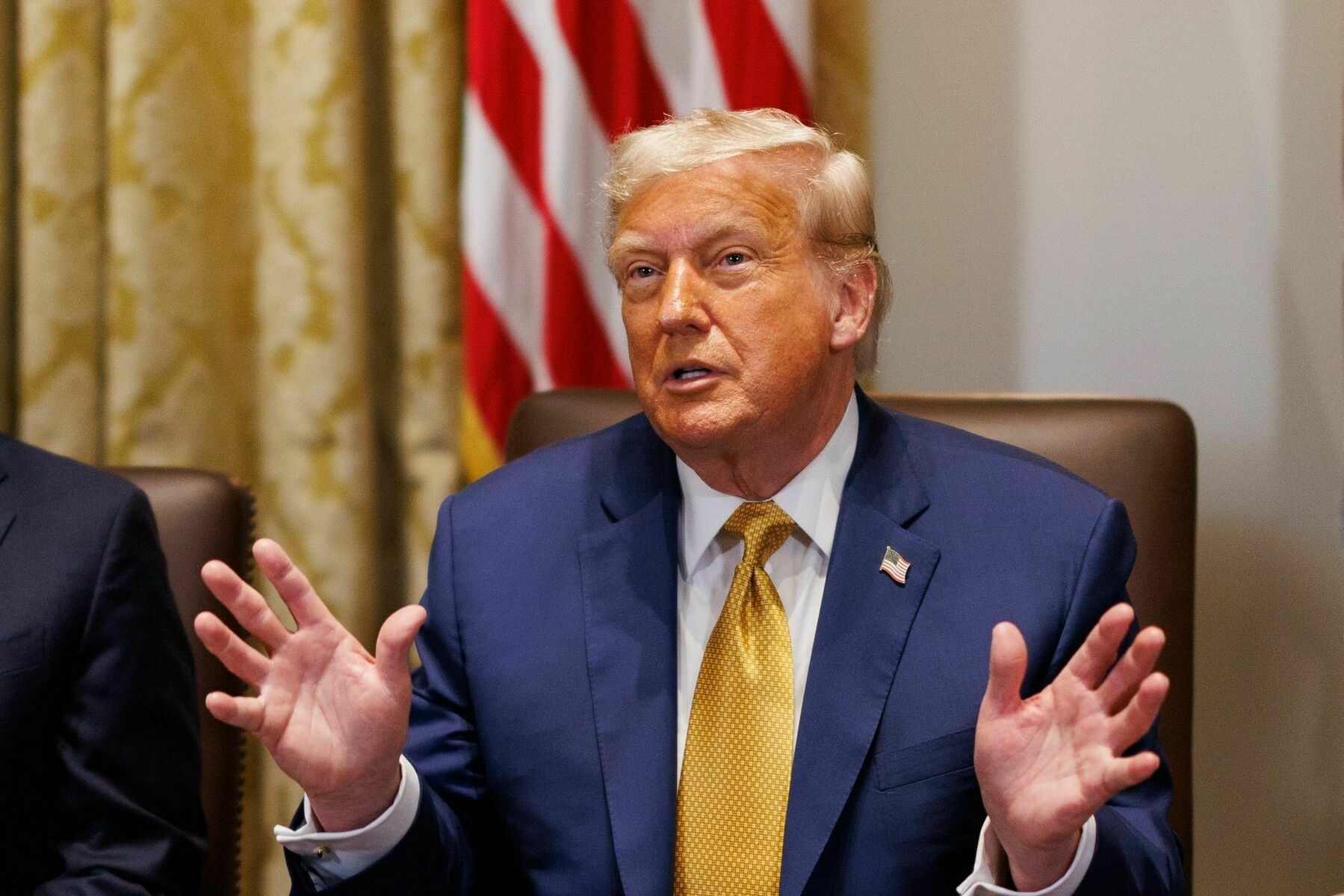
-
Trump sends weapons – Kremlin threatens NATO. Is the West ready for a major war?
-
Trump to exit Ukraine peace effort, Bolton says

The Kyiv Independent’s Chris York speaks with former U.S. National Security Advisor John Bolton about U.S. President Donald Trump’s failure to bring peace to Ukraine — and his next steps on Russia’s war. They also discuss the growing threat of a China-Russia alliance, the implications for U.S. foreign policy and global security, and the future of American military support for Ukraine.
-
Slovakia continues to block EU's 18th Russia sanctions package, media reports
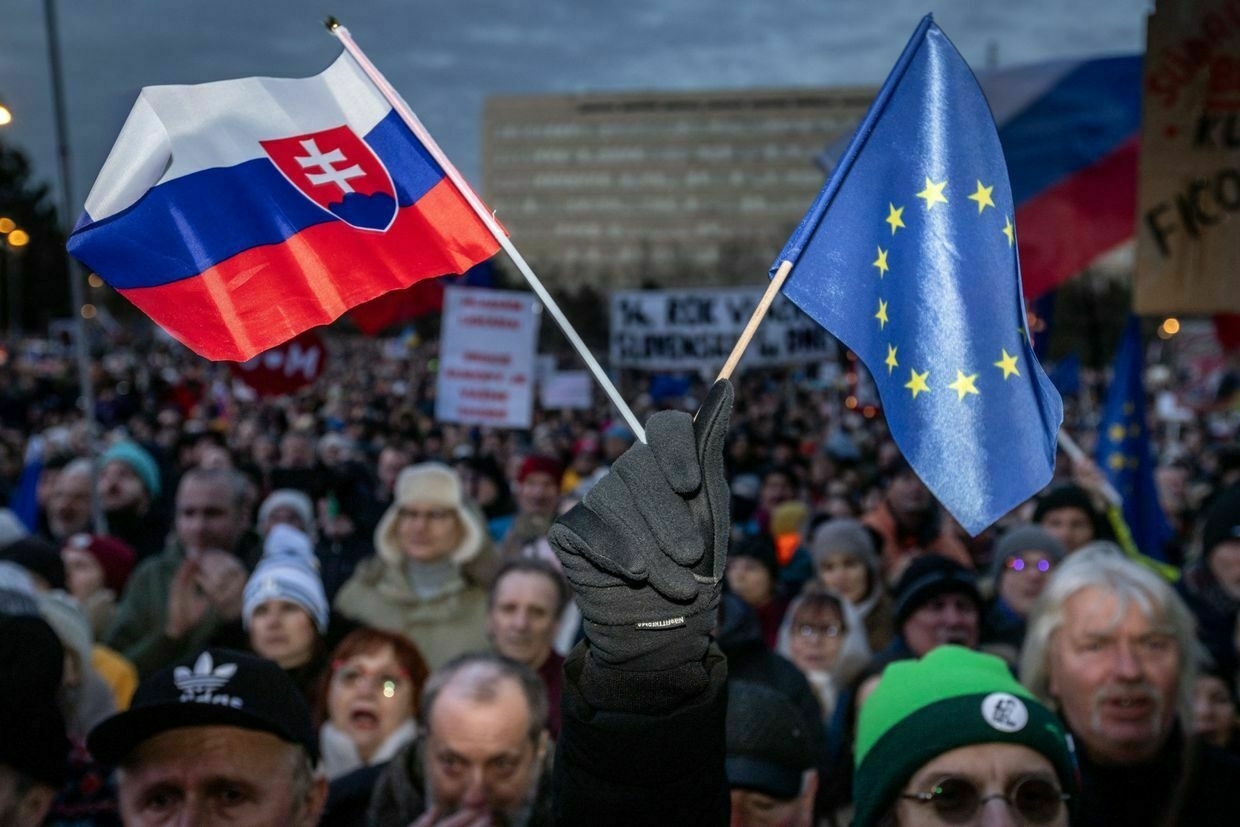
EU ambassadors failed to approve the bloc’s 18th package of sanctions against Russia during a July 9 Committee of Permanent Representatives meeting, as Slovakia continued to block the measures, European Pravda reported, citing three unnamed EU diplomats.
Since EU sanctions require unanimous backing, a single country’s veto prevents the package from being implemented. In late June, both Slovakia and Hungary opposed the draft sanctions, stalling their adoption.
According to European Pravda, Slovakia’s position has not changed, despite what one EU diplomat described as “good and productive” talks between Bratislava and the European Commission on July 3.
Unlike Hungarian Prime Minister Viktor Orban, who has consistently opposed sanctions and military aid for Ukraine, Slovakia has not previously tried to block new EU measures.
Bratislava asked for a delay in adopting the latest package until the EU clarifies the financial implications of RePowerEU — an initiative to end reliance on Russian fossil fuels by 2030.
The sanctions package will be discussed again at a meeting scheduled for July 11. Sources told the outlet that a final agreement is expected this week, with formal adoption likely to take place at the EU Foreign Affairs Council meeting on July 15.
The 18th package includes new restrictions on Russia’s energy and banking sectors, as well as bans on transactions connected to the Nord Stream pipeline project.
These measures are part of the EU’s broader effort to increase economic pressure on Moscow as the Kremlin rejects calls for an unconditional ceasefire in Ukraine.
While the EU advances its sanctions framework, the United States has not introduced any new sanctions on Russia since President Donald Trump took office in January.
Zelensky arrives in Italy to meet Pope Leo, Kellogg ahead of Ukraine Recovery ConferencePresident Volodymyr Zelensky arrived in Rome on July 9 and is set to meet with Pope Leo XIV, Suspilne broadcaster reported, citing the presidential spokesperson. The Kyiv IndependentMartin Fornusek
The Kyiv IndependentMartin Fornusek